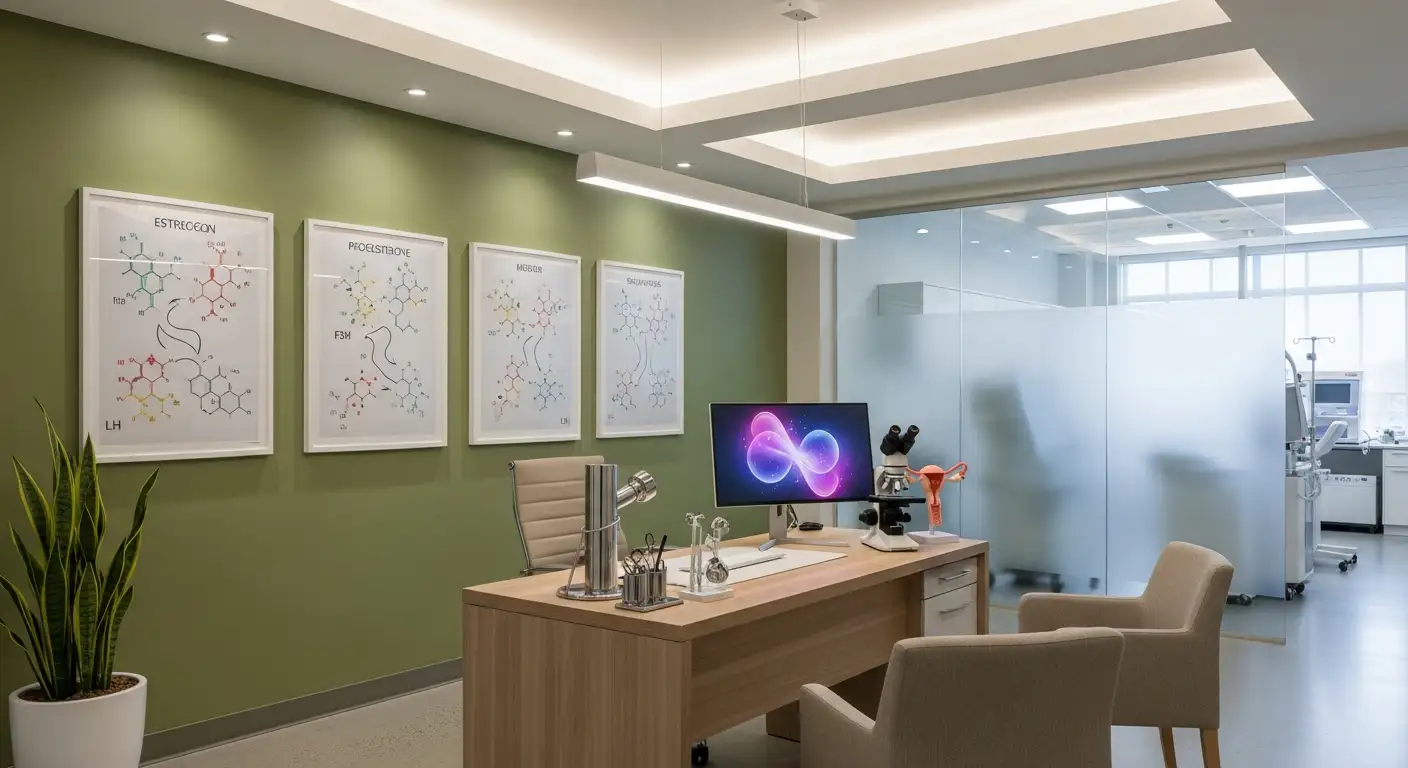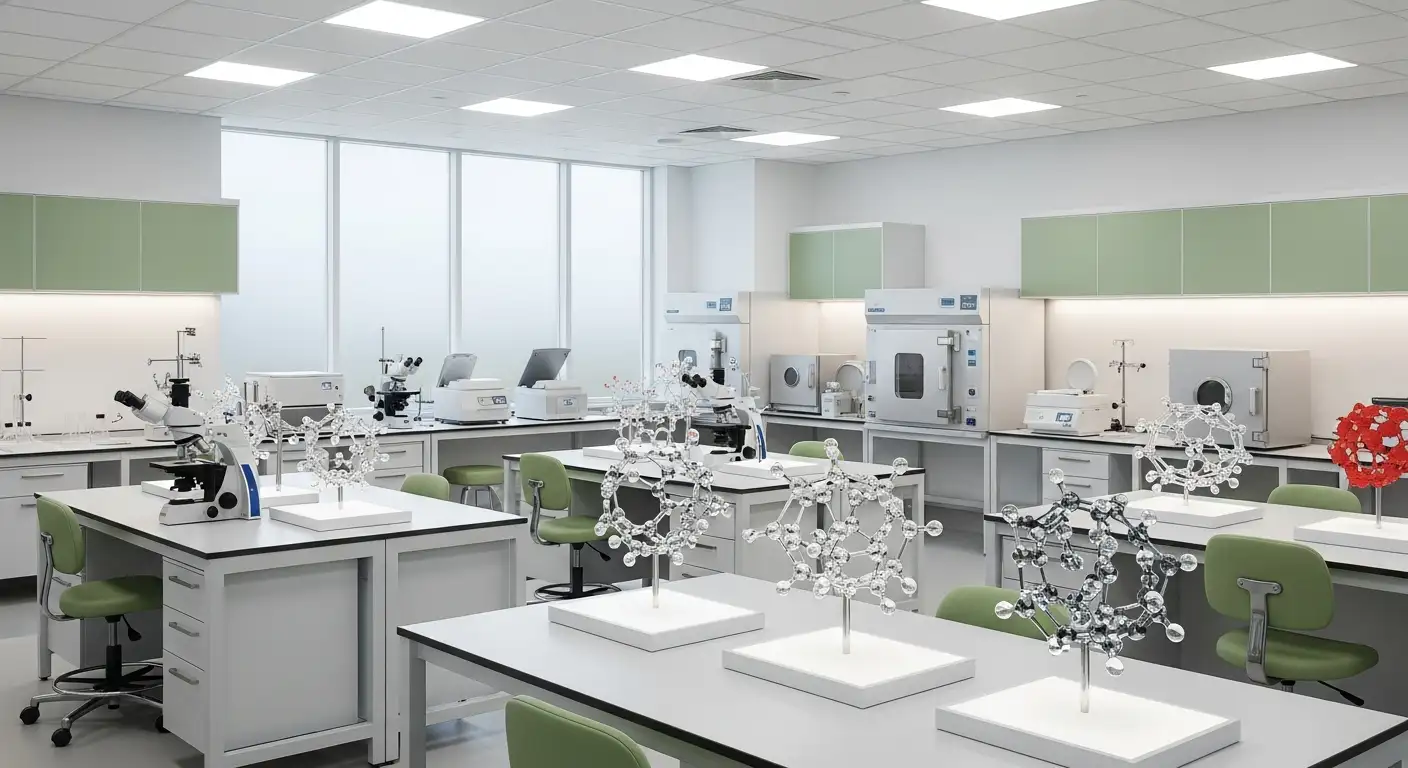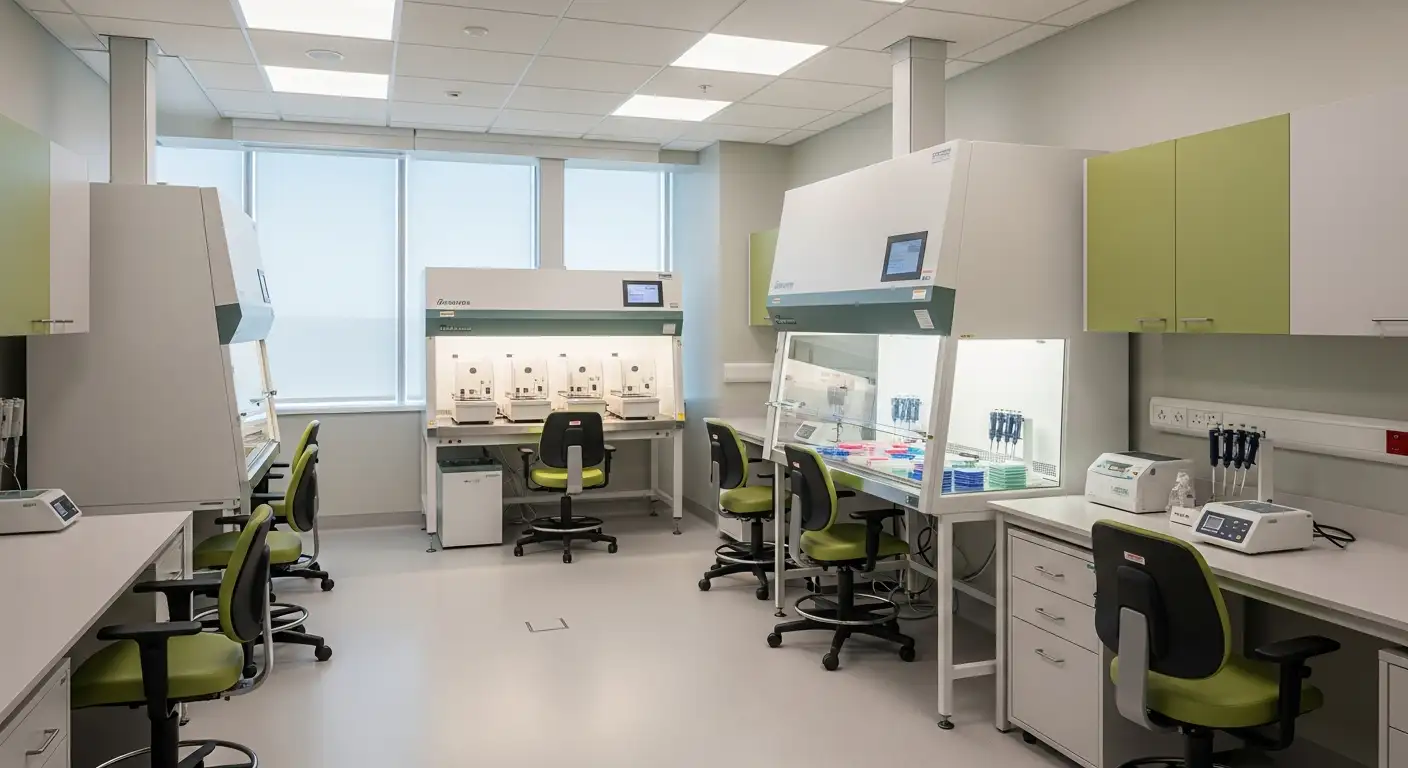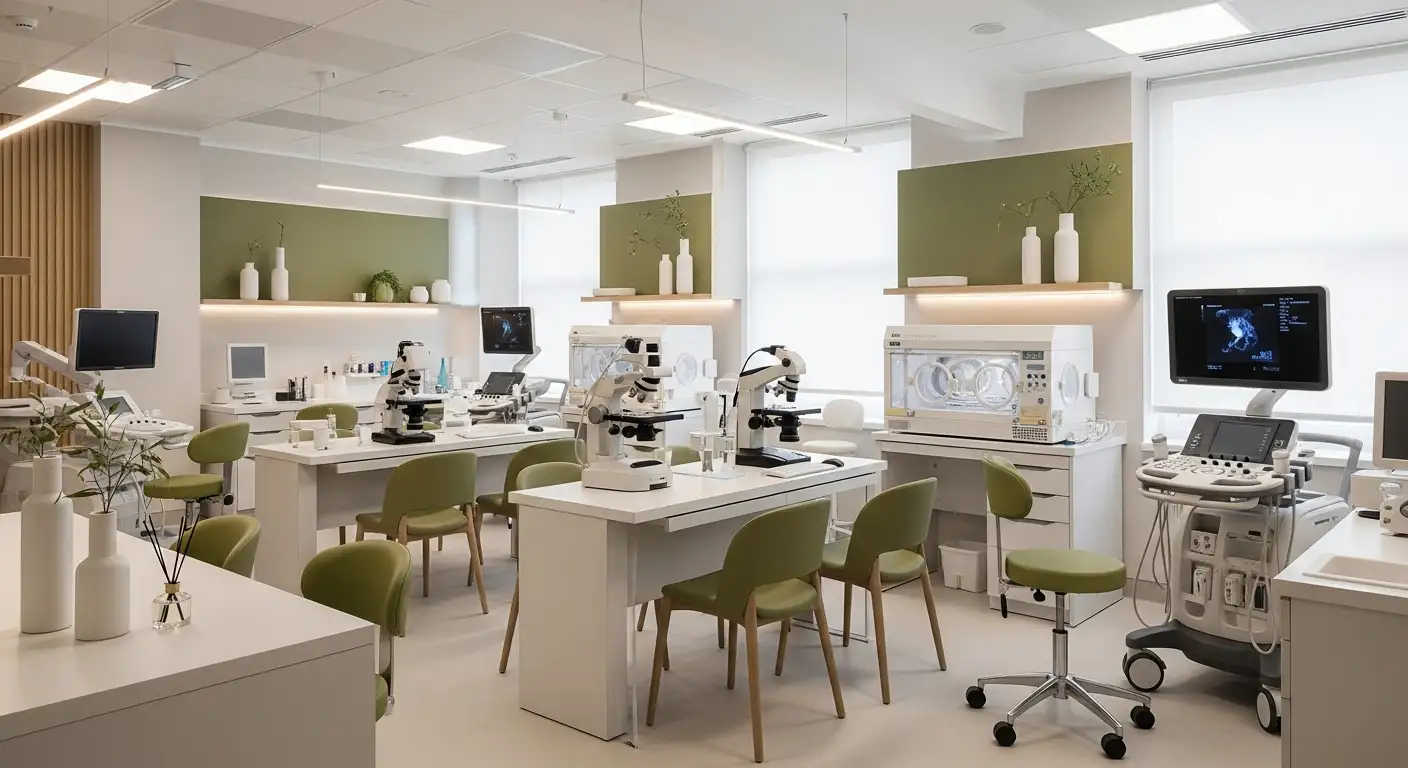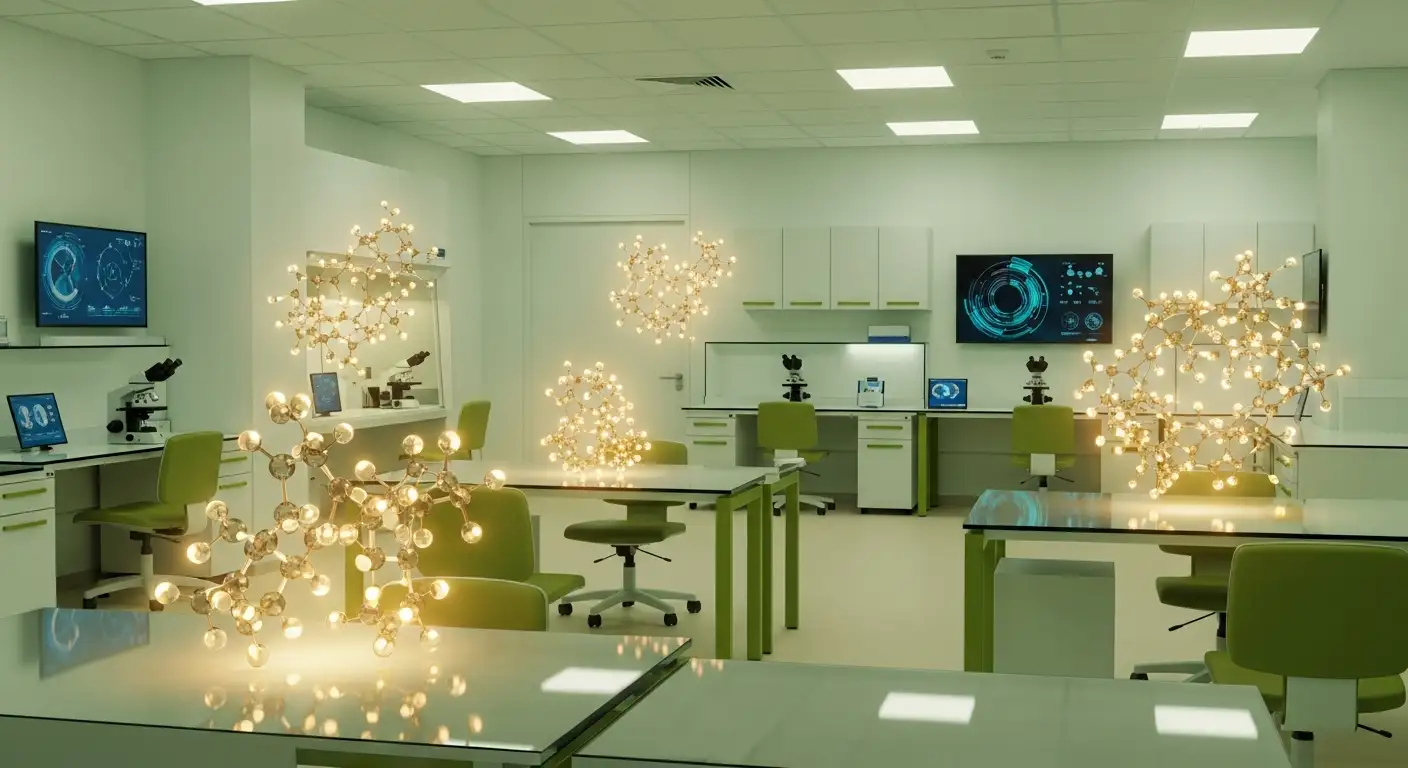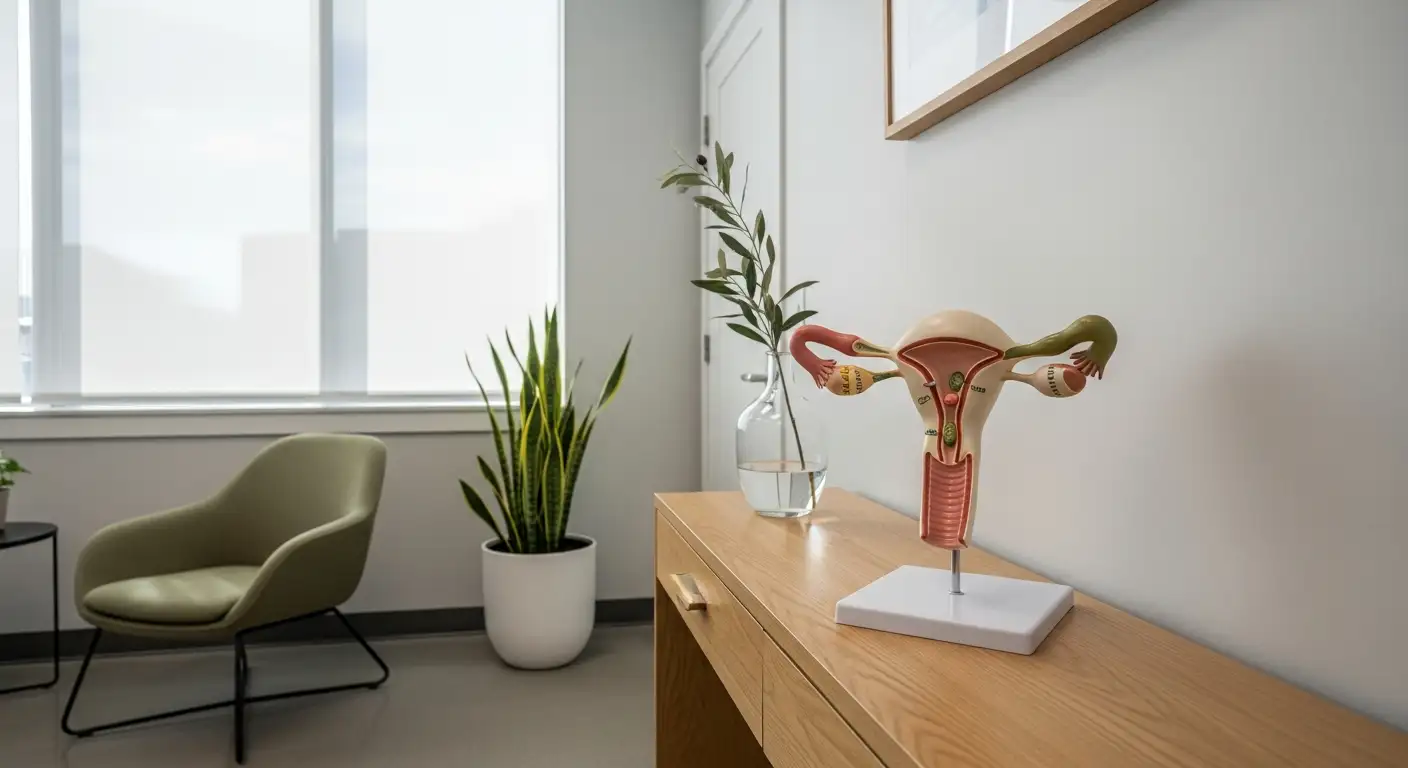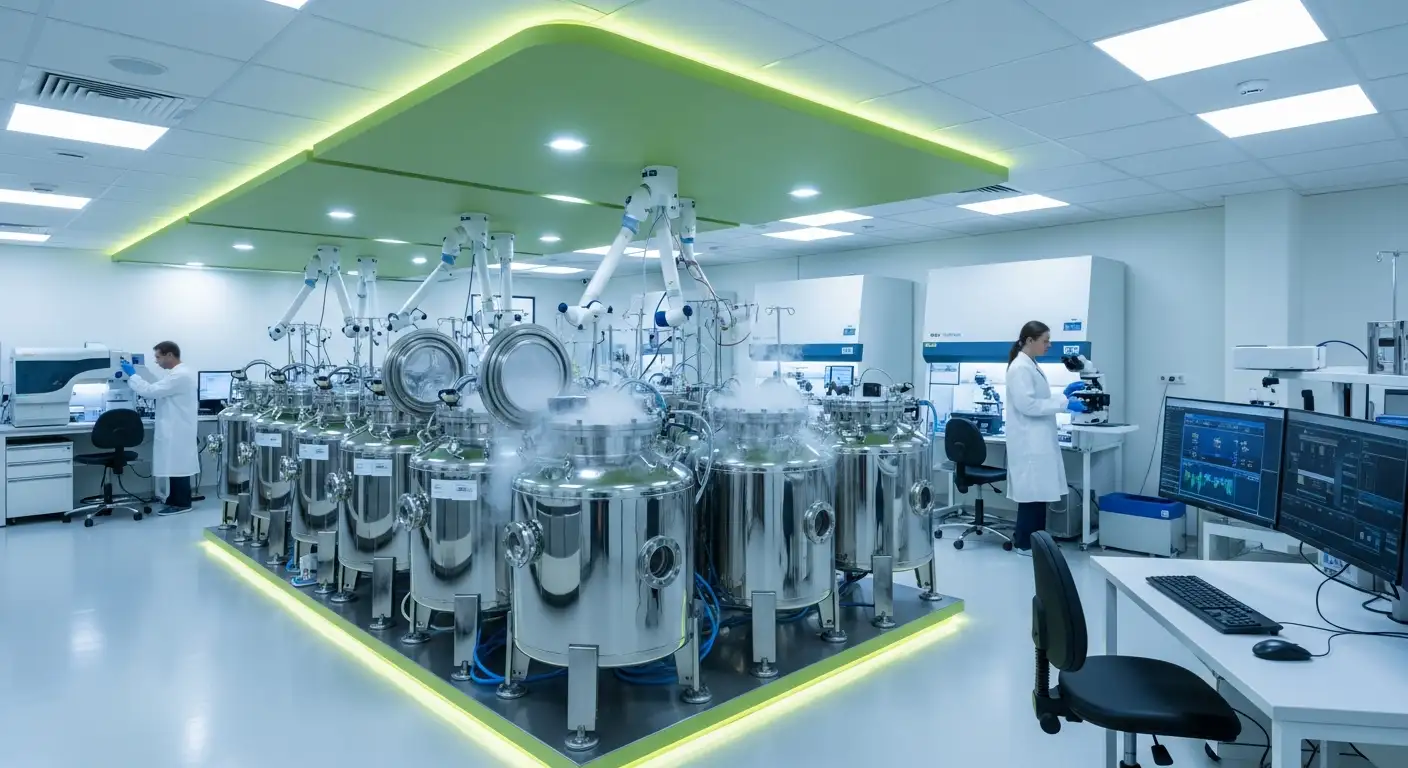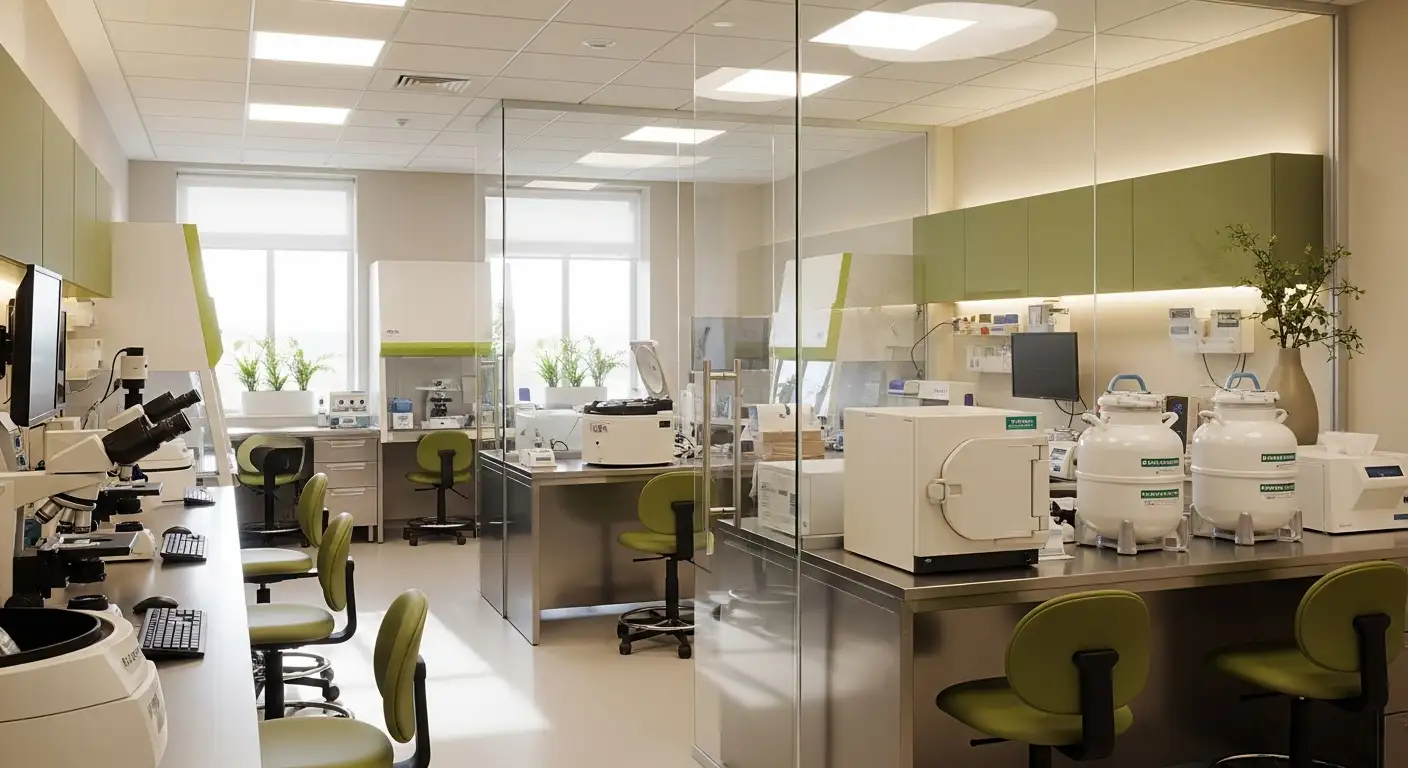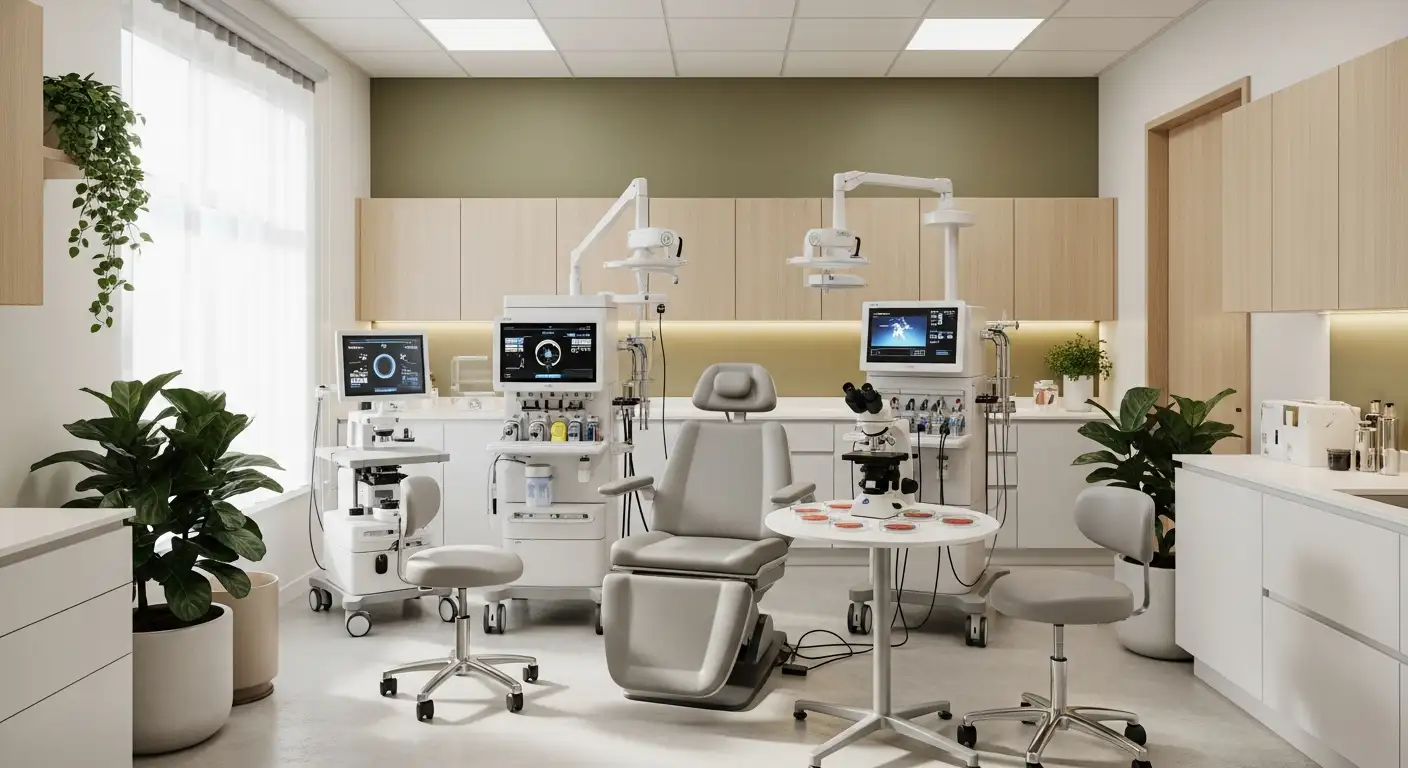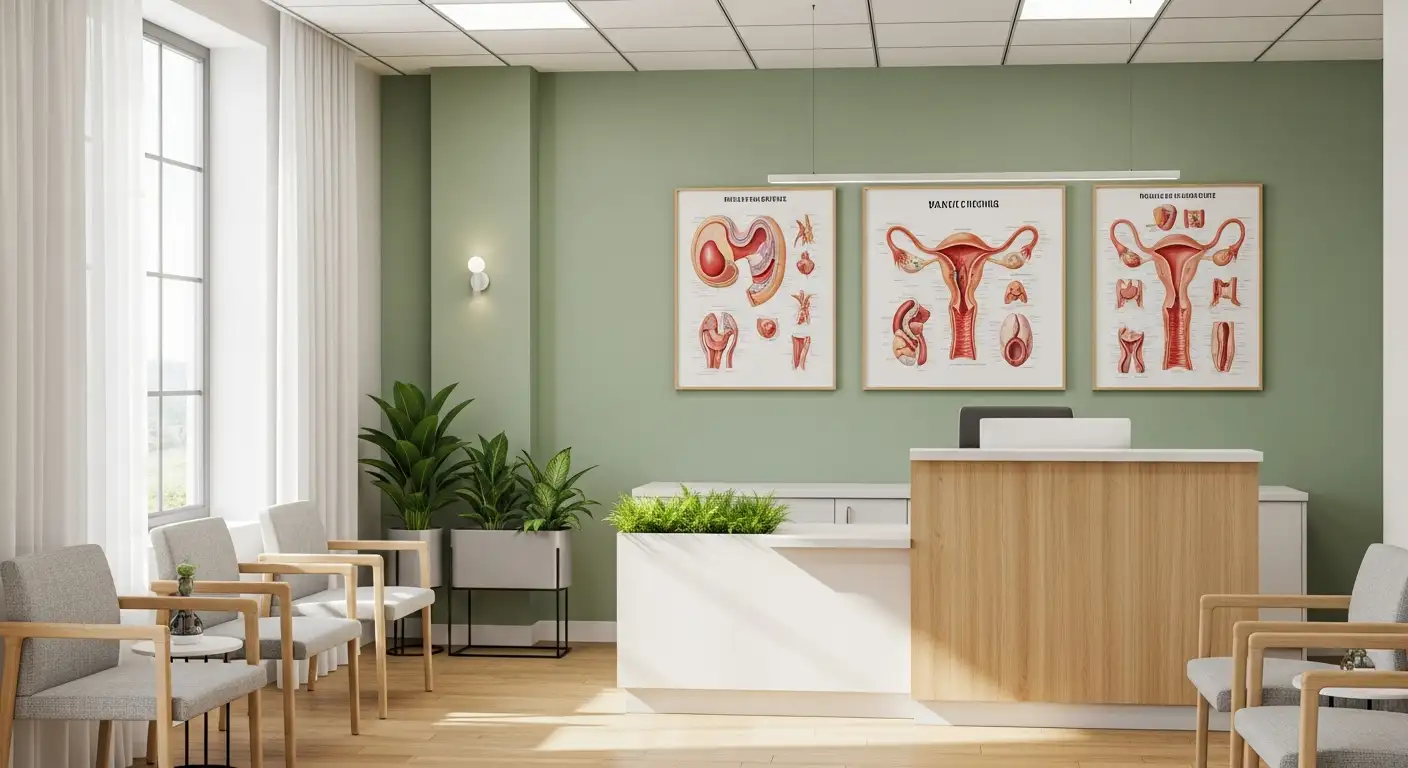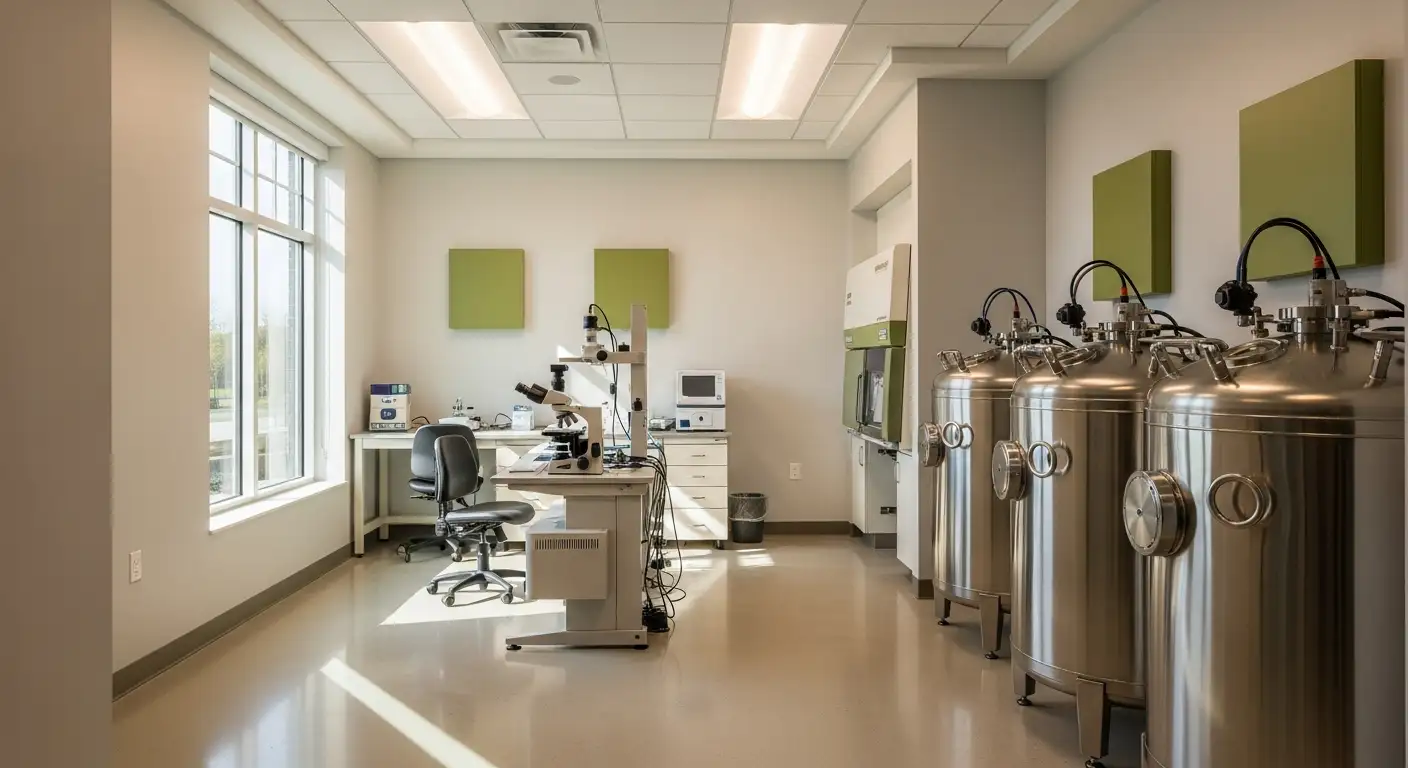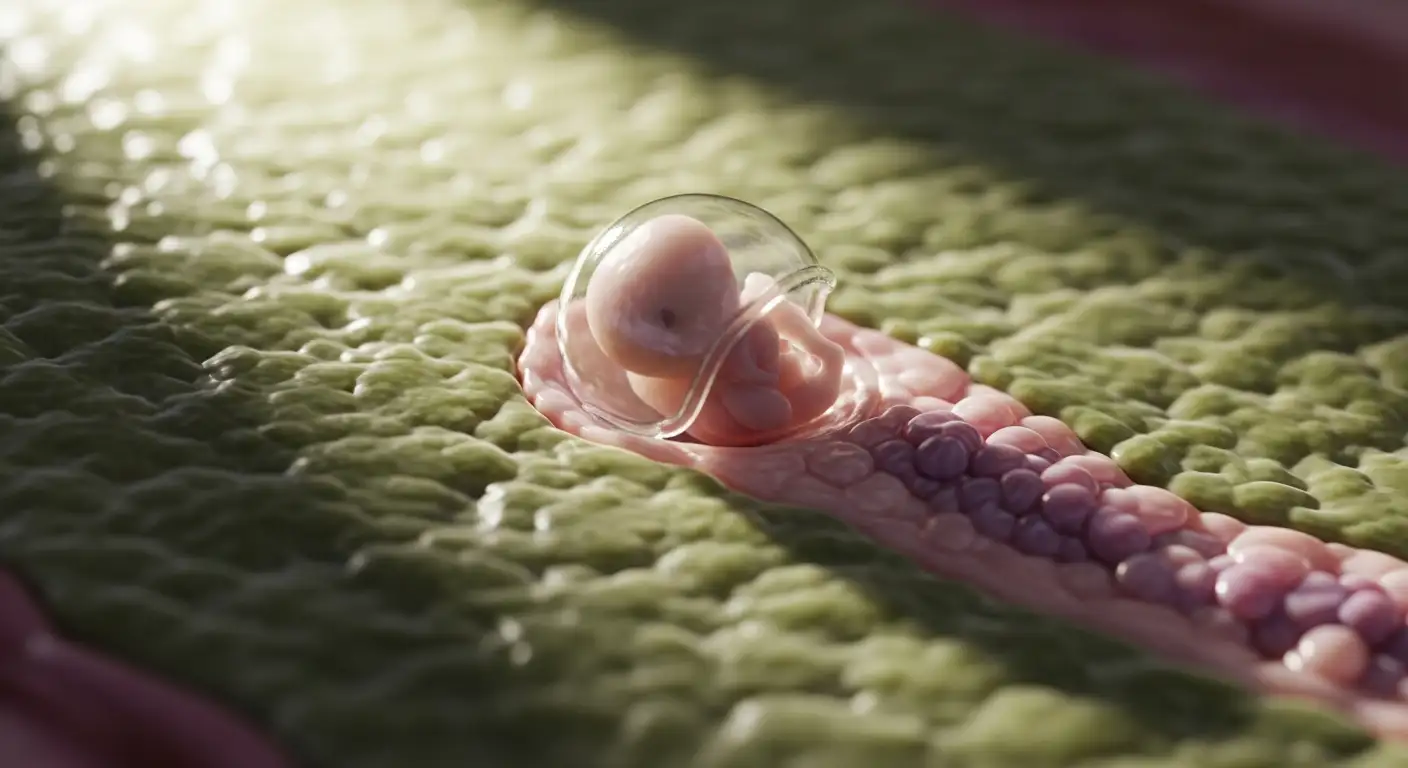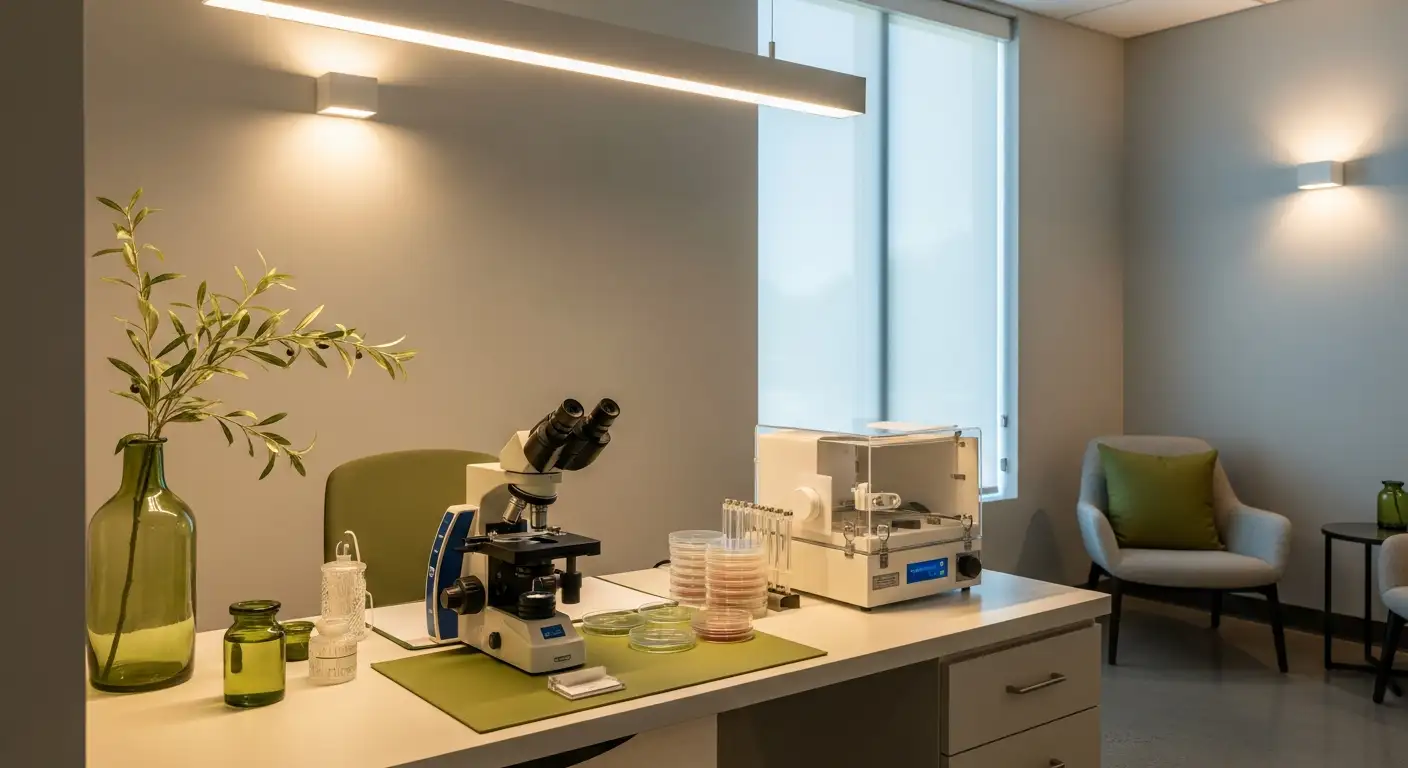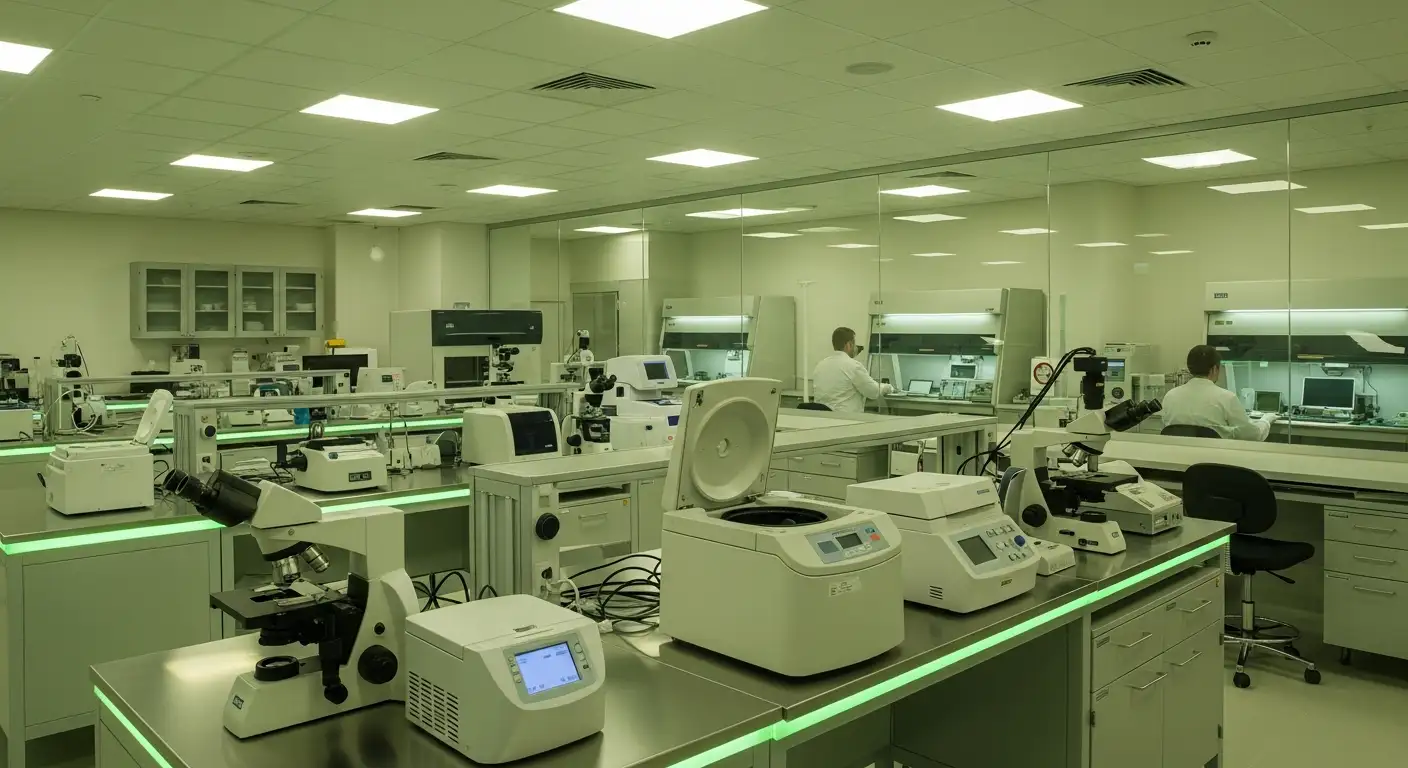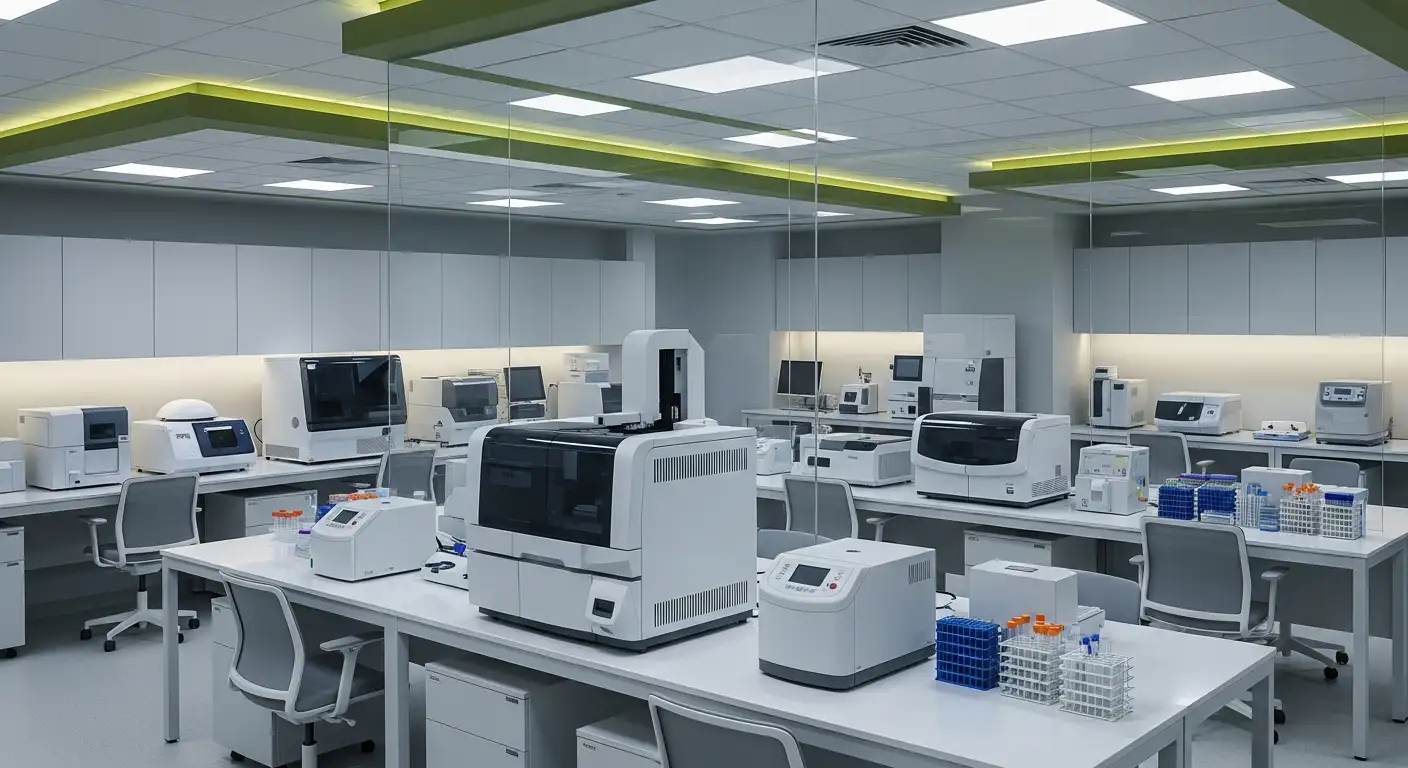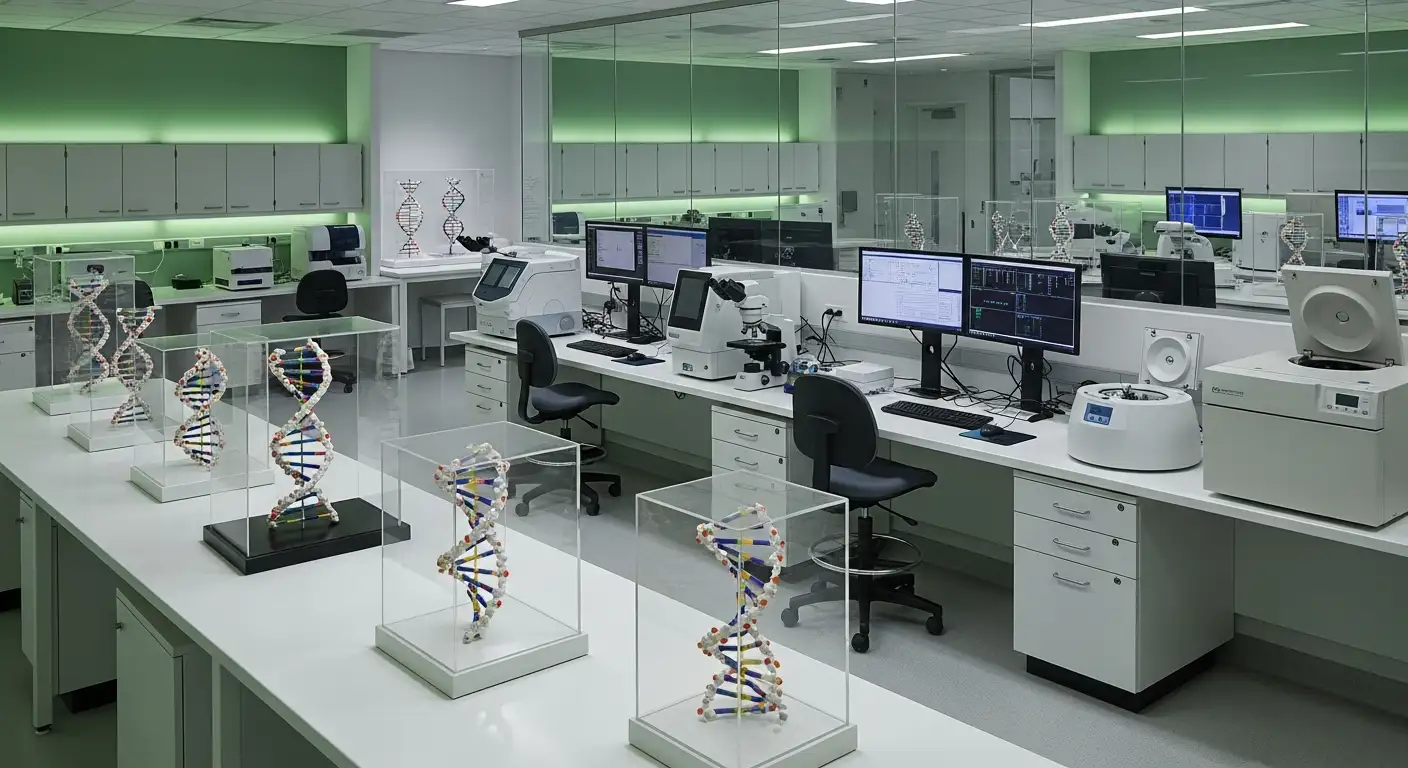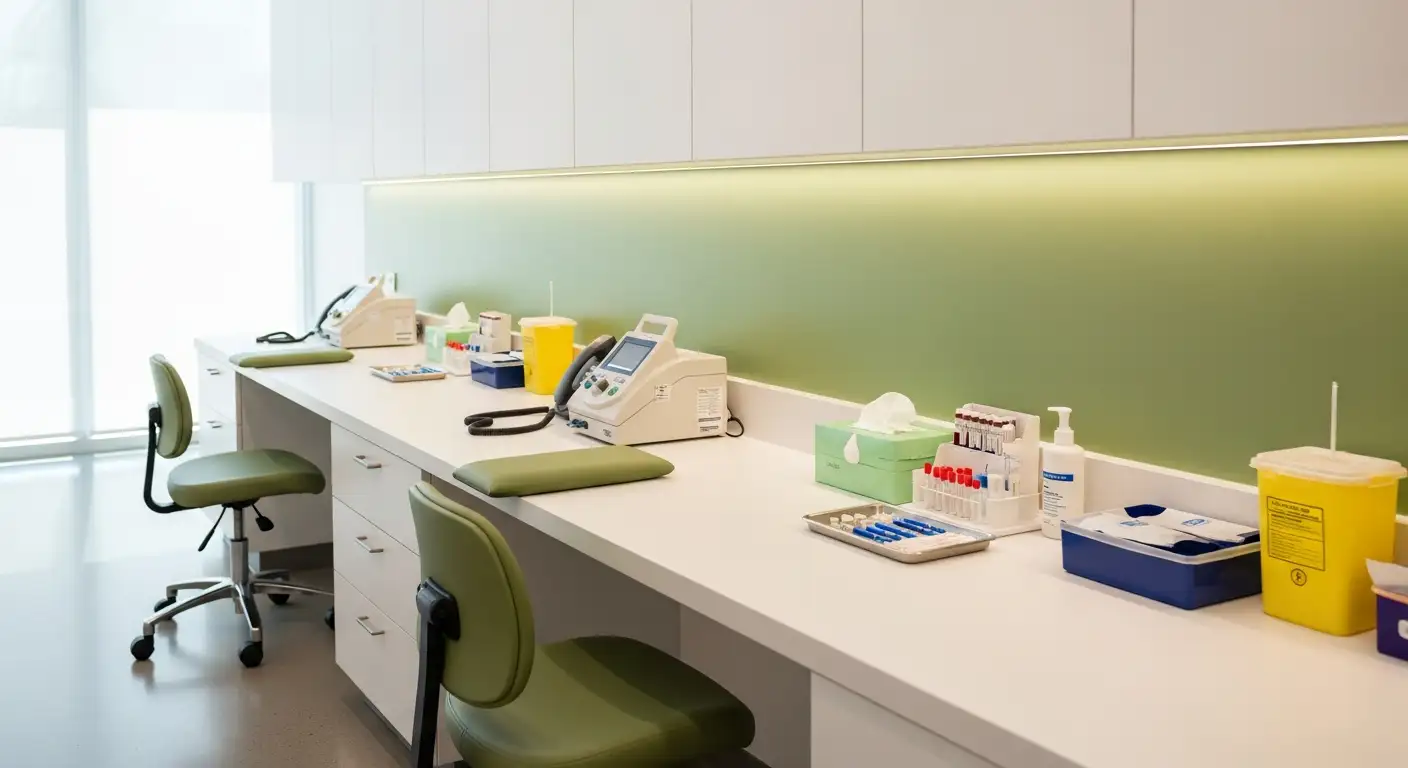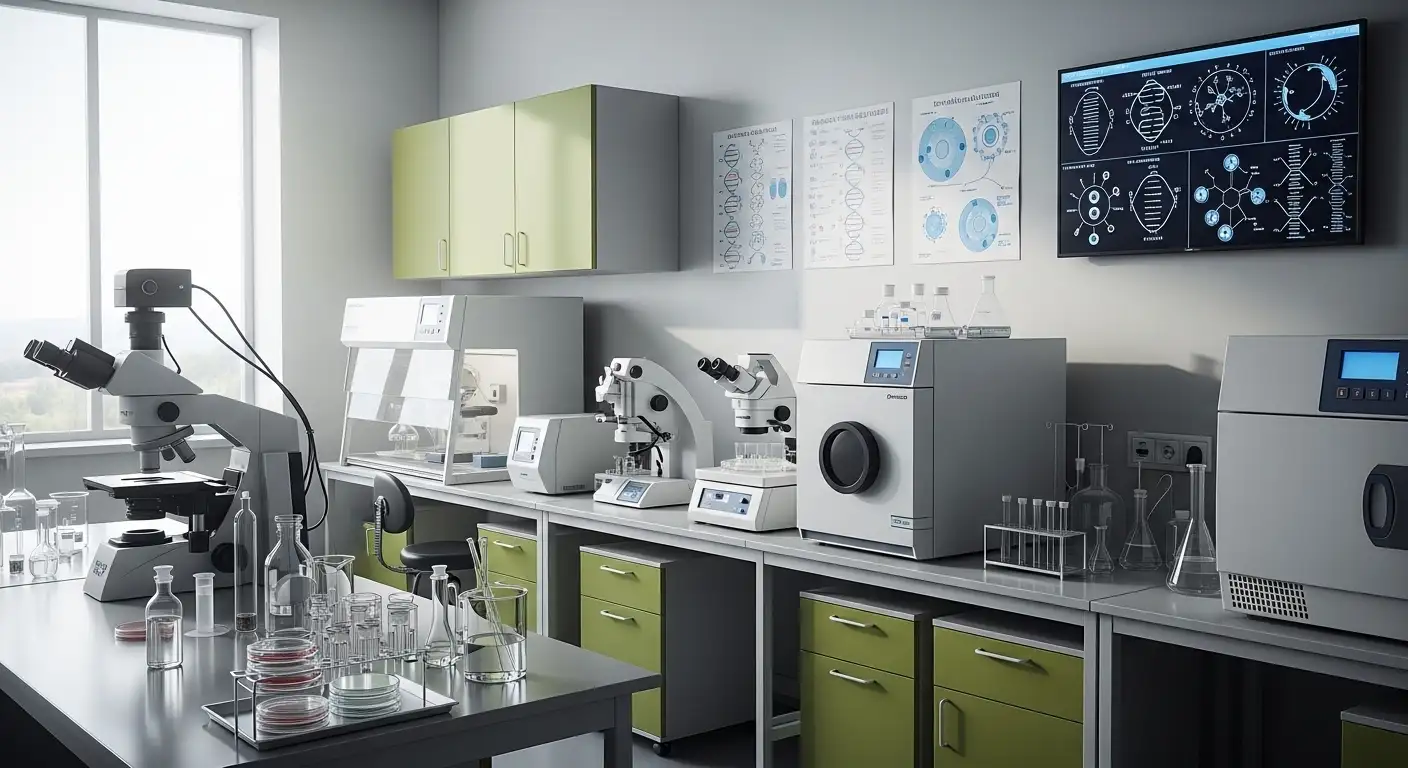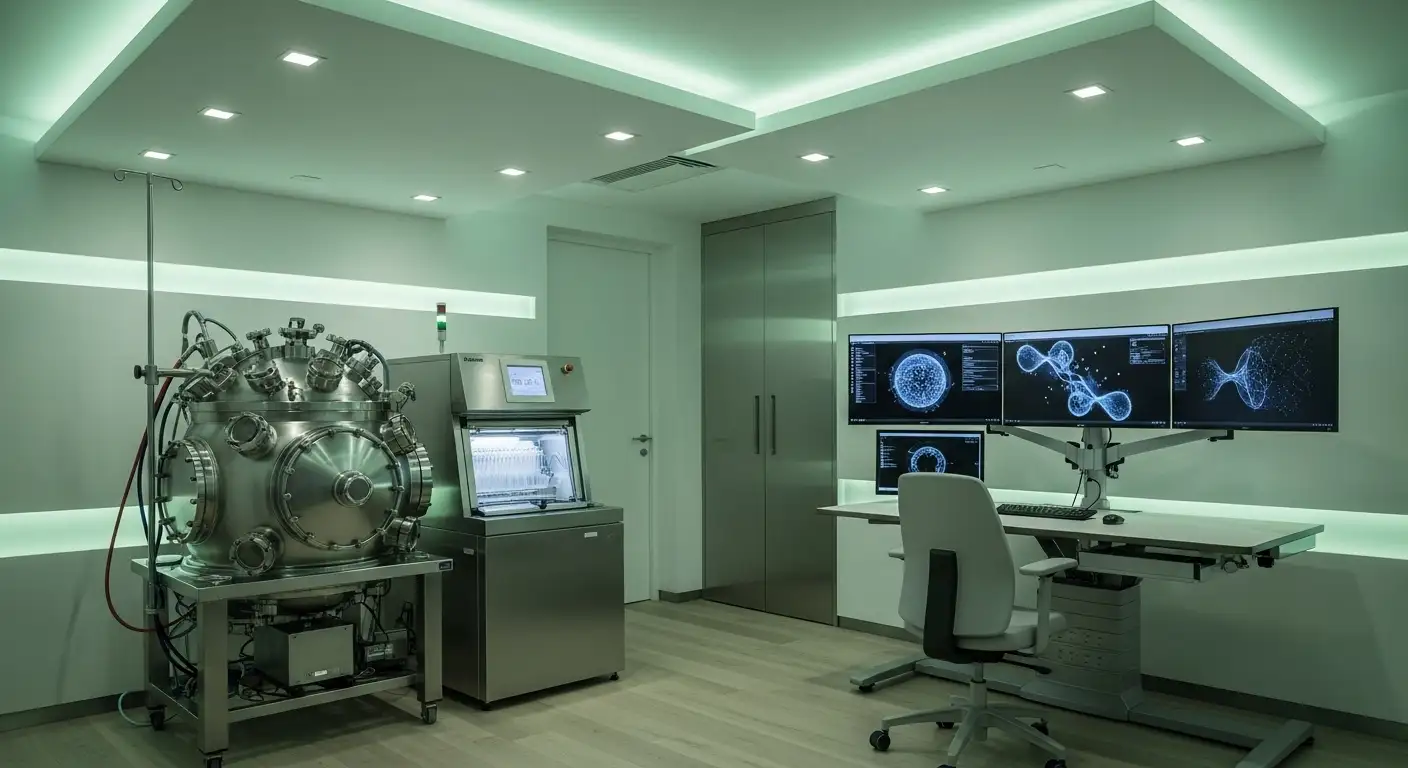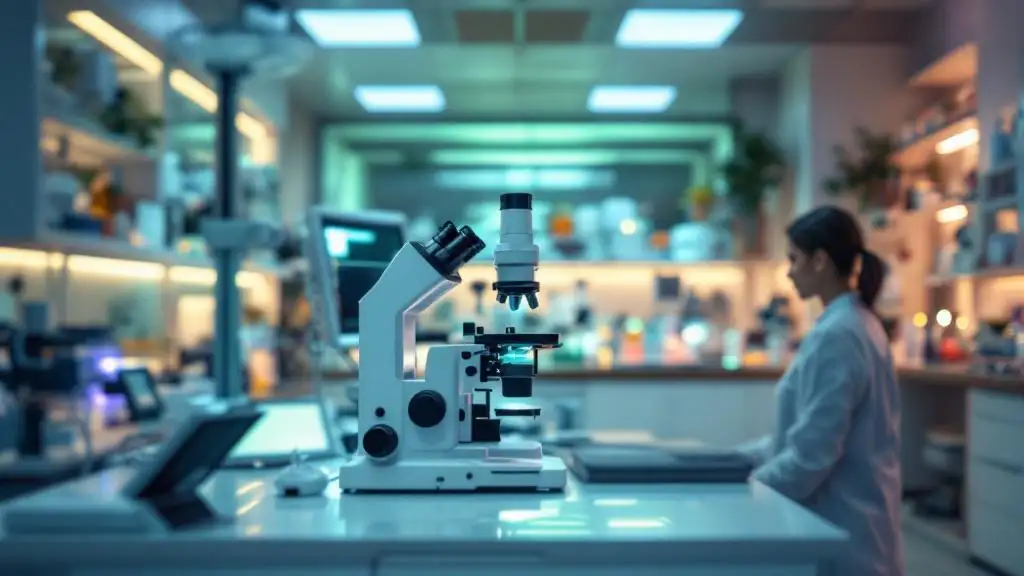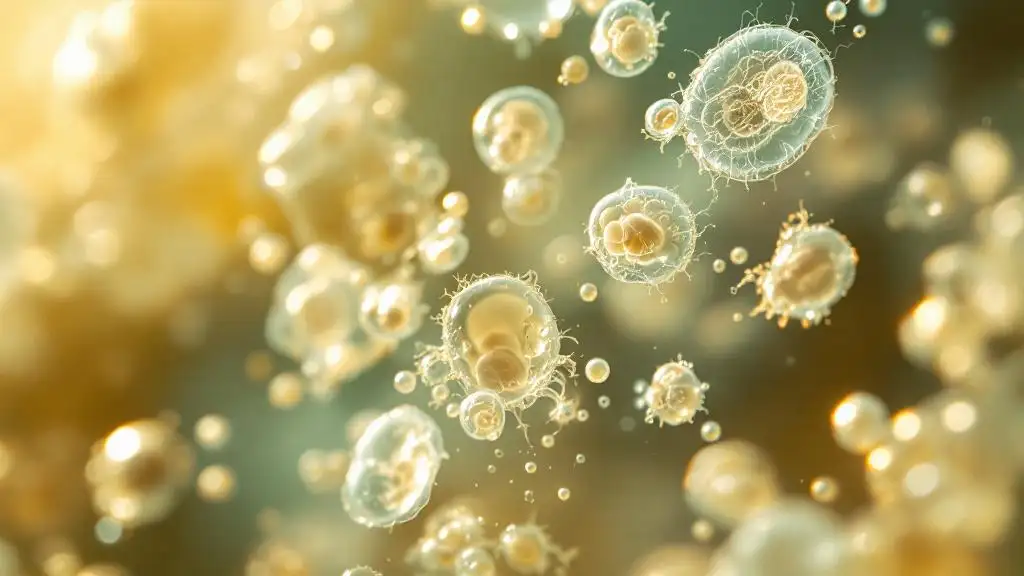How PRP therapy supports fertility in women
Revolutionizing Fertility Care: The Role of PRP Therapy in Enhancing Ovarian Function

Understanding PRP Therapy in Female Fertility
Platelet-rich plasma (PRP) therapy is emerging as a promising regenerative treatment in reproductive medicine, particularly for women facing challenges related to diminished ovarian reserve and other fertility issues. Harnessing the body's own growth factors, PRP therapy aims to rejuvenate ovarian tissue, improve hormonal balance, and support conception efforts. This article explores how PRP works, its clinical implications, and its potential to transform fertility treatment outcomes for women.
Overview of Common Fertility Treatments in Female Reproductive Health
What are the common medical treatments used to assist individuals and couples with conception?
Fertility treatments range from medications to advanced technologies designed to help individuals and couples conceive. Initially, ovulation stimulation medications such as clomiphene citrate or injectable gonadotropins are commonly prescribed to promote egg development and release.
Intrauterine insemination (IUI) is a less invasive technique where prepared sperm are placed directly into the uterus around ovulation, enhancing fertilization chances.
Assisted reproductive technologies (ART), including in vitro fertilization (IVF), involve retrieving eggs from ovaries, fertilizing them in a laboratory, and transferring resulting embryos into the uterus. This approach addresses more complex infertility issues.
Other fertility preservation methods include cryopreservation of eggs, sperm, or embryos, offering options for individuals facing medical treatments or age-related decline.
Treatment plans are customized based on the infertility cause, patient age, and reproductive goals, incorporating hormone therapies, surgical interventions, and ART methods to optimize success rates.
How Assisted Reproductive Technologies (ART) Enhance Fertility Outcomes
How do assisted reproductive technologies improve chances of conception?
Assisted reproductive technologies (ART) boost conception chances by enabling fertilization to occur outside the body, which is particularly beneficial for those facing infertility challenges. Procedures such as in vitro fertilization (IVF) and intracytoplasmic sperm injection (ICSI) involve stimulating the ovaries to produce multiple eggs, retrieving these eggs, and fertilizing them under controlled laboratory conditions.
Mechanisms of ART
ART enhances fertility by carefully managing each step of reproduction. Ovarian stimulation increases the number of mature eggs available. Fertilization happens in vitro, where sperm and eggs meet in an optimal environment. Embryo development is closely monitored to select the healthiest embryos for transfer.
Fertilization Outside the Body
By fertilizing eggs externally, ART bypasses issues such as blocked fallopian tubes or low sperm motility. This direct approach improves fertilization success compared to natural conception.
Embryo Transfer Techniques
Once embryos develop, they are transferred into the uterus at the ideal stage for implantation. Techniques like embryo grading help select embryos with the highest implantation potential.
Timing and Environment Control
ART allows precise control of the timing for fertilization and transfer. The laboratory environment is optimized for embryo development, reducing the risks posed by hostile uterine conditions.
Improved Pregnancy Rates with ART
Overall, ART significantly enhances pregnancy success rates, offering hope to many individuals and couples facing fertility issues by improving ovarian response, fertilization rates, embryo quality, and implantation outcomes.
Platelet-Rich Plasma (PRP): Composition and Biological Activity
What is Platelet-Rich Plasma (PRP)?
Platelet-rich plasma (PRP) is an autologous concentration of platelets derived from a patient’s own blood. It contains a rich collection of growth factors and cytokines essential for tissue regeneration, repair, and angiogenesis, making it a promising therapeutic option in ovarian and reproductive medicine.
What Are the Key Growth Factors in PRP?
PRP is particularly enriched with several growth factors, including:
- Platelet-derived growth factor (PDGF)
- Transforming growth factor beta (TGF-β)
- Vascular endothelial growth factor (VEGF)
- Epidermal growth factor (EGF)
- Insulin-like growth factors (IGF-I and IGF-II)
- Connective tissue growth factor (CTGF)
- Hepatocyte growth factor (HGF)
These bioactive molecules are primarily responsible for PRP's regenerative properties.
What Are the Functions of These Growth Factors?
The growth factors in PRP have multiple functions:
- PDGF and TGF-β stimulate cell proliferation and differentiation.
- VEGF promotes angiogenesis, which is the formation of new blood vessels vital for tissue oxygenation and nutrient delivery.
- EGF and IGF support granulosa cell proliferation and folliculogenesis, enhancing ovarian follicle development.
- HGF and CTGF contribute to tissue remodeling and repair.
How Does PRP Support Tissue Regeneration?
The mechanisms behind PRP's regenerative effects involve activation of dormant primordial follicles and stimulation of tissue remodeling. Cytokines and growth factors facilitate cell migration, proliferation, and differentiation, creating an environment conducive to repairing damaged ovarian tissue. PRP also acts to reduce local inflammation, which helps restore normal ovarian function.
What Roles Do Angiogenesis and Cytokines Play?
Angiogenesis induced by VEGF and other factors enhances blood supply within ovarian tissue, vital for follicle survival and function. Cytokines present in PRP modulate inflammatory responses and support the delicate balance needed for tissue healing and regeneration. This improved vascularization and controlled inflammation foster an optimal environment for folliculogenesis and ovarian endocrine activity.
Preparation and Administration of PRP in Fertility Treatments
How is PRP prepared from autologous blood?
PRP treatment begins with the collection of autologous blood from the patient. This blood is then subjected to a centrifugation process designed to concentrate platelets by separating red blood cells and plasma. The resulting platelet-rich plasma contains a high concentration of growth factors important for tissue regeneration.
What centrifugation methods are commonly used?
Centrifugation protocols can vary among clinics, but generally involve a two-step spin: a slower first spin to separate plasma and platelets from red blood cells, followed by a faster second spin to concentrate the platelets. This method helps achieve an optimal platelet concentration for therapeutic use.
What activation techniques are employed to release growth factors?
Before administration, PRP may be activated to induce the release of growth factors. Common activation agents include calcium chloride and thrombin, which trigger platelet degranulation and enhance the therapeutic potential of PRP.
How is the intraovarian PRP injection procedure performed?
The concentrated and activated PRP is injected directly into ovarian tissue, typically under ultrasound guidance to ensure accurate placement. This intraovarian administration aims to stimulate follicular activity and promote ovarian tissue regeneration.
Are PRP protocols standardized across clinics?
Protocols for PRP preparation and injection vary significantly across fertility clinics. Differences can include blood volume collected, centrifugation speeds, activation methods, and injection techniques. Such variance highlights a current need for standardization to optimize outcomes and comparability across studies.
Biological Mechanisms of PRP Therapy in Ovarian Rejuvenation
How does PRP activate dormant primordial follicles?
PRP contains a rich concentration of growth factors such as platelet-derived growth factor (PDGF) and transforming growth factor beta (TGF-β) that play a crucial role in initiating follicular activity. These bioactive molecules promote the survival and proliferation of dormant primordial follicles, potentially reactivating them and contributing to increased ovarian reserve.
What role does angiogenesis play in ovarian tissue repair?
One of the primary effects of PRP in ovarian tissue is the enhancement of angiogenesis, driven by vascular endothelial growth factor (VEGF) and other angiogenic factors present in the plasma. This neovascularization improves blood supply to the ovaries, ensuring better oxygenation and nutrient delivery essential for follicle development and overall ovarian endocrine function.
How does PRP contribute to tissue repair and remodeling?
PRP supports ovarian tissue repair by supplying growth factors like epidermal growth factor (EGF) and insulin-like growth factor (IGF), which stimulate cell proliferation, migration, and differentiation. These actions promote tissue regeneration and remodeling, helping restore the ovarian microenvironment conducive to folliculogenesis.
Can PRP reduce local inflammation in the ovaries?
Yes, PRP contains cytokines and growth factors that modulate the inflammatory response. By reducing local inflammation, PRP helps create a healthier ovarian niche, which is critical for follicle survival and improved ovarian function.
Which intracellular signaling pathways does PRP activate in ovarian cells?
PRP stimulates key intracellular pathways including the PI3K/AKT/mTOR cascade. Activation of this pathway promotes cell survival, proliferation, and angiogenesis within ovarian tissue, facilitating ovarian rejuvenation and enhanced tissue function.
Table: Summary of Biological Actions of PRP in Ovarian Rejuvenation
| Mechanism | Key Factors Involved | Effect on Ovarian Tissue |
|---|---|---|
| Activation of Dormant Follicles | PDGF, TGF-β | Reactivation of primordial follicles |
| Angiogenesis | VEGF, PDGF | Improved blood supply and follicle support |
| Tissue Repair & Remodeling | EGF, IGF | Enhanced proliferation and tissue regeneration |
| Inflammation Reduction | Cytokines | Healthier ovarian environment |
| Intracellular Signaling | PI3K/AKT/mTOR Pathway | Cell survival and growth promotion |
Clinical Evidence for PRP in Improving Ovarian Reserve Markers
Increased Anti-Müllerian Hormone (AMH)
Clinical studies consistently report that intraovarian PRP treatment leads to notable increases in serum Anti-Müllerian Hormone (AMH) levels. For example, women treated with PRP showed AMH rises of approximately 0.20 ng/ml at one month, 0.26 ng/ml at two months, and 0.36 ng/ml at three months post-treatment. This hormone is an important marker of ovarian reserve, reflecting the quantity of remaining follicles.
Improved Antral Follicle Count (AFC)
Alongside AMH improvements, the Antral Follicle Count (AFC) increases significantly after PRP therapy. Studies reveal an average rise of about 1.6 follicles following treatment. This suggests that PRP supports folliculogenesis by stimulating follicle growth and development within the ovary.
Decreased Follicle-stimulating Hormone (FSH)
Another critical change observed is a decrease in serum Follicle-stimulating Hormone (FSH) levels, which typically rise when ovarian function declines. PRP therapy reduced FSH by around 10.2 IU/ml at one month and maintained lower levels at subsequent months, indicating improved ovarian responsiveness.
Folliculogenesis Enhancement
The growth factors in PRP—such as PDGF, VEGF, and TGF-β—promote vascularization, granulosa cell proliferation, and follicular development, thus fostering folliculogenesis. This biologic effect translates to better ovarian function and may improve oocyte quality.
Spontaneous Ovulation Following PRP
Encouragingly, PRP treatment has also been linked to the resumption of spontaneous ovulation in women with diminished ovarian reserve or premature ovarian insufficiency. Reports indicate a spontaneous pregnancy rate of approximately 7% after PRP therapy, alongside improved menstrual cycle regularity.
This clinical evidence supports the potential of PRP as a regenerative treatment to revitalize ovarian function by increasing AMH and AFC levels, reducing FSH, enhancing folliculogenesis, and promoting spontaneous ovulation.
PRP Therapy Outcomes in Women with Premature Ovarian Insufficiency (POI) and Diminished Ovarian Reserve (DOR)
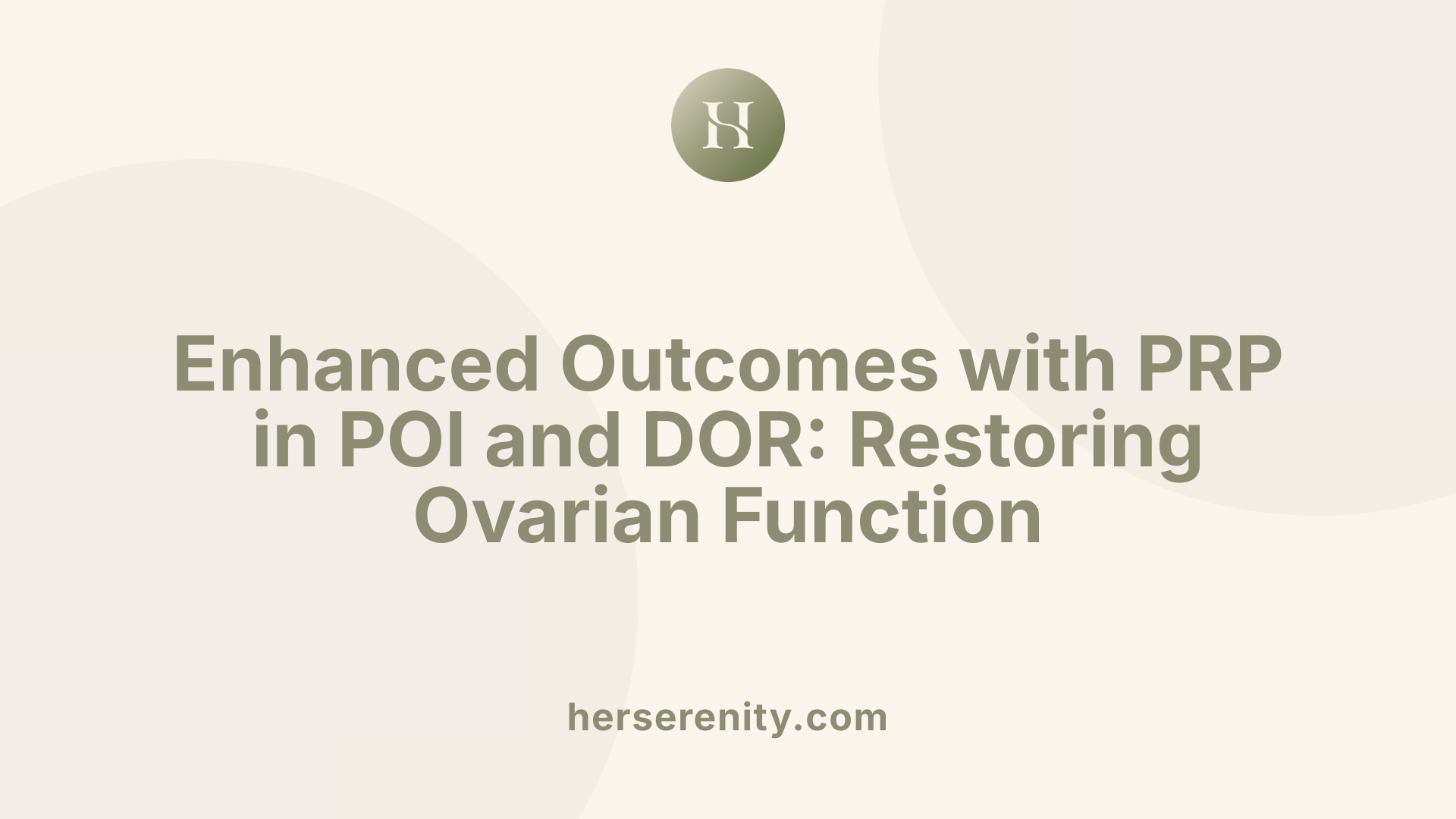
How Does PRP Restore Menstrual Cycles and Improve Hormonal Balance in POI and DOR?
Intraovarian PRP therapy has shown promise in restoring menstrual cycles for women with POI and DOR. Growth factors within PRP, such as PDGF, VEGF, and TGF-β, promote tissue regeneration and angiogenesis, which help revive ovarian function. Clinical studies report increased serum Anti-Müllerian Hormone (AMH) levels and decreased Follicle-Stimulating Hormone (FSH) after treatment, indicating improved ovarian hormonal balance and function.
What Are the Effects of PRP on Spontaneous Pregnancy Rates?
PRP treatment has led to encouraging spontaneous pregnancy rates among women with compromised ovarian function. Data suggest approximately 7% of treated women experienced spontaneous pregnancy, with biochemical pregnancy rates around 18% and live birth rates near 11%. These outcomes highlight PRP's potential to enhance natural fertility without additional assisted reproductive technologies.
How Does PRP Improve Oocyte Quality and Follicle Development?
PRP's bioactive growth factors stimulate folliculogenesis and granulosa cell proliferation, supporting ovarian microenvironment remodeling. This results in increased Antral Follicle Count (AFC), greater number of retrieved oocytes, and higher embryo yield post-treatment. Additionally, PRP’s antioxidative properties may reduce ovarian oxidative stress and promote mitochondrial health, further enhancing oocyte quality.
What Are the Benefits of PRP in Poor Ovarian Response (POR)?
Women diagnosed with POR, often characterized by a reduced ovarian reserve and poor responses to stimulation, have shown improved outcomes following PRP therapy. Studies demonstrate increased AFC, improved hormone profiles, and better ovarian response during IVF cycles after PRP intervention, suggesting its role in ovarian rejuvenation and fertility enhancement for this group.
PRP's Role in Enhancing Assisted Reproductive Technology (ART) Success
How does PRP augment ovulation response?
Intraovarian administration of platelet-rich plasma (PRP) stimulates follicular activity in women with diminished ovarian reserve (DOR) or poor ovarian response. By delivering growth factors such as PDGF, VEGF, and IGF directly into ovarian tissue, PRP increases levels of ovarian reserve markers like Anti-Müllerian Hormone (AMH) and antral follicle count (AFC). This results in improved ovulation rates and a higher number of retrieved oocytes during ART cycles.
In what ways does PRP improve embryo quality?
PRP therapy enhances ovarian function through mechanisms like reducing oxidative stress and promoting mitochondrial biogenesis in oocytes. These regenerative effects contribute to better oocyte quality, which translates to increased numbers of viable embryos. Clinical data have shown that post-PRP treatment, the average number of embryos created rises alongside oocyte retrieval.
How does PRP enhance the endometrial environment?
Beyond the ovaries, intrauterine PRP injections promote endometrial regeneration, increasing endometrial thickness and vascularization. This tissue repair fosters a more receptive uterine lining by improving angiogenesis and reducing inflammation, which is crucial for successful embryo implantation.
What is the impact on implantation rates?
PRP's contribution to a healthier endometrial milieu has been associated with increased implantation success. Studies report higher clinical pregnancy rates in women receiving intrauterine PRP, especially those with a history of recurrent implantation failure or thin endometrium.
Does PRP improve clinical pregnancy outcomes?
Combining enhanced ovarian response and improved endometrial receptivity, PRP therapy has shown promise in elevating clinical pregnancy rates in ART treatments. Reported outcomes include increased spontaneous pregnancy rates post-PRP infusion and improved live birth rates, emphasizing PRP's potential role in advancing fertility success.
| Aspect | Effect of PRP | Clinical Implication |
|---|---|---|
| Ovulation Response | Increased AMH, AFC, and oocyte retrieval | Better ovarian stimulation outcomes |
| Embryo Quality | Enhanced mitochondrial function and oocyte quality | Increased viable embryo numbers |
| Endometrial Environment | Thicker, more vascularized lining | Improved receptivity for implantation |
| Implantation Rates | Higher success in embryo attachment | Greater pregnancy success rates |
| Clinical Pregnancy Outcomes | Raised pregnancy and live birth rates | Improved overall ART treatment effectiveness |
PRP Therapy and Its Effects on Endometrial Receptivity and Regeneration
How Does PRP Promote Endometrial Hypertrophy and Regeneration?
Platelet-rich plasma (PRP) contains numerous growth factors such as PDGF, VEGF, and EGF that stimulate cell proliferation, angiogenesis, and tissue repair. These bioactive factors contribute to thickening of the endometrium, often referred to as endometrial hypertrophy, by enhancing cellular migration and regeneration within the uterine lining. This effect is particularly beneficial in cases of thin endometrium, where achieving optimal thickness is critical for successful embryo implantation.
In What Ways Can PRP Help With Intrauterine Adhesion and Endometrial Damage?
PRP has been used to treat intrauterine adhesions (Asherman syndrome) by promoting regeneration of the damaged endometrial tissue. The growth factors in PRP enhance vascularization and stimulate proliferation of endometrial cells, leading to increased endometrial thickness. Clinical reports show that PRP injections in these cases improve the uterine environment, facilitating restoration of normal menstrual cycles and improving pregnancy outcomes.
How Does PRP Influence Endometrial Thickness?
Intrauterine PRP infusion has been demonstrated to increase endometrial thickness significantly. This thickening is essential for providing a receptive surface for embryo implantation. The mechanism involves accelerated tissue repair and neovascularization, which enhances blood flow and supports a healthier, more robust endometrial lining capable of sustaining pregnancy.
What Are the Benefits of PRP in Improving Implantation Success?
By promoting endometrial regeneration and increasing receptivity, PRP therapy improves the likelihood of embryo implantation. Clinical data from women experiencing recurrent implantation failure (RIF) reveal enhanced endometrial receptivity following PRP infusion, resulting in higher clinical pregnancy and live birth rates. PRP supports an environment conducive to embryo attachment and growth by reducing inflammation and improving tissue quality.
How Is PRP Used in Managing Recurrent Implantation Failure (RIF)?
For women facing RIF, intrauterine PRP administration is emerging as an effective adjunct treatment. PRP improves endometrial parameters such as thickness and vascularization, key factors often compromised in these patients. Enhanced endometrial receptivity achieved through PRP aids in overcoming implantation barriers, thereby increasing the success rates in assisted reproductive technology cycles.
In summary, PRP therapy offers a promising approach for endometrial repair and improved implantation outcomes, particularly valuable for conditions like thin endometrium, intrauterine adhesion, and recurrent implantation failure.
PRP Treatment for Ovarian Damage Due to Chemotherapy
How Does PRP Protect Ovarian Tissue from Chemotherapy Damage?
Chemotherapy often causes significant ovarian damage, leading to diminished ovarian reserve and hormonal imbalances. PRP, rich in growth factors like PDGF, VEGF, and TGF-β, supports tissue regeneration and angiogenesis, which helps protect and repair ovarian tissue affected by chemotherapy. These factors stimulate cell proliferation, reduce inflammation, and promote neovascularization, vital for restoring ovarian health after toxic insults.
Can PRP Restore Hormonal Levels After Chemotherapy?
Clinical evidence shows that intraovarian PRP administration helps in restoring ovarian hormone levels. Women treated with PRP post-chemotherapy exhibited improvements in serum Anti-Müllerian Hormone (AMH) and decreases in Follicle-Stimulating Hormone (FSH), suggesting recovery of endocrine function. This hormonal rebalancing supports the resumption of normal ovarian activity.
What Is the Impact of PRP on Ovarian Reserve Recovery?
PRP therapy has demonstrated potential to increase markers of ovarian reserve such as AMH and Antral Follicle Count (AFC) in treated patients. Preclinical animal models and preliminary clinical reports indicate that PRP may activate dormant primordial follicles and promote folliculogenesis, contributing to improved ovarian reserve despite chemotherapy-induced damage.
How Does PRP Support Fertility Preservation After Chemotherapy?
By enhancing ovarian tissue regeneration, angiogenesis, and hormone production, PRP therapy offers promising support for fertility preservation in women undergoing chemotherapy. It may improve oocyte quality and follicular development, creating better chances for natural conception or assisted reproductive technologies post-treatment. The procedure's safety and effectiveness in this context encourage ongoing research to optimize protocols for fertility preservation strategies.
Safety Profile and Potential Risks of PRP Therapy in Fertility Care
What are the risks and benefits associated with fertility treatments?
Fertility treatments provide significant benefits by increasing the chances of conception, addressing problems with eggs, sperm, or reproductive tract issues. Techniques such as IVF and ICSI allow for selecting viable gametes and can reduce genetic abnormalities, supporting a broad range of patients including same-sex couples and those using donor materials.
However, these treatments also bear risks. Multiple pregnancies can cause premature birth or birth defects. Ovarian hyperstimulation syndrome (OHSS) and emotional or financial stress are additional concerns. Surgical and hormonal interventions may cause discomfort or complications. Despite these risks, fertility treatments remain crucial for many individuals seeking to conceive.
What is the incidence of localized discomfort after PRP therapy?
Intraovarian PRP therapy is generally well tolerated. The most commonly reported adverse effect is localized discomfort at the injection site. This discomfort is typically mild and transient, resolving shortly after the procedure without requiring intervention.
Are there any serious adverse effects linked to PRP use?
To date, no serious adverse events directly associated with PRP therapy in fertility care have been reported. Studies consistently show it to be a safe procedure with minimal complications, especially when autologous blood is used, reducing risks of immune reaction or infection.
Why are long-term safety studies necessary?
While current data suggest PRP is safe, standardized protocols are lacking and long-term effects remain unclear. Rigorous, well-designed clinical trials with extended follow-up are needed to fully assess the durability of benefits and any potential delayed risks involved in ovarian or endometrial PRP treatments.
What challenges does the lack of standardized PRP protocols present?
Variations in PRP preparation—such as differences in centrifugation techniques, platelet concentration, and activation methods—lead to inconsistent treatment outcomes. This lack of standardization complicates safety assessments and comparability across studies, underscoring the need for clear guidelines.
How should risk-benefit considerations guide PRP use?
Given its promising potential to improve ovarian reserve and reproductive outcomes with minimal side effects, PRP therapy represents a valuable option for women with diminished ovarian reserve or reproductive challenges. Nonetheless, patients and clinicians should weigh the current evidence, acknowledge uncertainties, and consider PRP as an adjunct rather than a definitive cure until further research validates its long-term safety and efficacy.
PRP Therapy’s Impact on Oocyte Quality and Mitochondrial Health
How does PRP improve mitochondrial biogenesis and reduce oxidative stress?
PRP therapy stimulates mitochondrial biogenesis, which increases the number and function of mitochondria in ovarian cells. This boost is essential because mitochondria provide the energy required for oocyte maturation and development. Furthermore, PRP reduces oxidative stress within ovarian tissues by delivering antioxidant growth factors, helping to protect oocytes from damage caused by reactive oxygen species.
Which survival signaling pathways are activated by PRP to enhance oocyte competence?
PRP activates intracellular pathways such as PI3K/AKT/mTOR, crucial for cell survival, proliferation, and angiogenesis. These pathways promote the activation of dormant follicles and support ovarian tissue regeneration. Through these mechanisms, PRP enhances folliculogenesis and improves the quality and competence of oocytes.
Can PRP therapy potentially reverse ovarian aging?
Yes, PRP shows promise in reversing aspects of ovarian aging by promoting tissue repair and regeneration. Its growth factors stimulate angiogenesis, mitochondrial health, and survival signaling, which collectively contribute to restoring ovarian function. This rejuvenation effect may improve oocyte quality and increase fertility potential in women experiencing diminished ovarian reserve or premature ovarian insufficiency.
Why is enhancing oocyte mitochondrial health important?
Mitochondrial health directly influences oocyte competence as mitochondria supply energy needed for fertilization and early embryo development. Improved mitochondrial function through PRP treatment supports these processes and may lead to better reproductive outcomes.
PRP therapy thus offers a multifaceted regenerative approach, stimulating mitochondrial biogenesis, reducing oxidative damage, and activating survival pathways to enhance oocyte quality and potentially delay ovarian aging.
Enhancing Fertility Through Angiogenesis: PRP’s Critical Role
How Does PRP Promote Neovascularization Within Ovarian Tissue?
PRP contains multiple bioactive growth factors, including platelet-derived growth factor (PDGF), vascular endothelial growth factor (VEGF), and transforming growth factor beta (TGF-β), which are essential for initiating neovascularization. This process involves the formation of new blood vessels within the ovarian tissue, crucial for sustaining healthy follicle environments and supporting ovarian regeneration.
What Is the Role of Restoring Blood Supply in Ovarian Health?
The restoration of blood supply through angiogenesis enhances oxygen and nutrient delivery to ovarian tissues. This improved vascularization creates a supportive microenvironment for dormant primordial follicles to activate and mature, which is particularly important for women with compromised ovarian reserves.
How Does PRP Support Follicle Development?
PRP facilitates folliculogenesis by stimulating granulosa cell proliferation and differentiation. The presence of growth factors such as insulin-like growth factor (IGF) and epidermal growth factor (EGF) encourages the growth and maturation of ovarian follicles, thus improving the chances of ovulation and subsequent fertility.
In What Ways Does PRP Improve Ovarian Endocrine Function?
The enhanced blood flow promoted by PRP's angiogenic effects supports the ovarian endocrine system's functioning, improving hormone production balance, including Anti-Müllerian Hormone (AMH) and follicle-stimulating hormone (FSH). This hormonal balance is a key marker of ovarian reserve and function.
Why Is Angiogenesis Particularly Important in Conditions Like POI and DOR?
Premature ovarian insufficiency (POI) and diminished ovarian reserve (DOR) involve reduced follicular activity and impaired ovarian function. Angiogenesis driven by PRP therapy restores vascularization that may deteriorate in these conditions, aiding ovarian tissue repair and enhancing fertility potential.
The multifaceted roles of PRP in promoting angiogenesis and restoring ovarian blood flow underscore its emerging promise as a therapeutic approach in treating infertility associated with ovarian dysfunction.
PRP’s Influence on Hormonal Regulation and Balance in Women
How does PRP treatment affect Anti-Müllerian Hormone (AMH) levels?
PRP therapy has been shown to increase AMH levels, a marker reflecting ovarian reserve. Studies report rises of 0.20 ng/ml at one month, 0.26 ng/ml at two months, and 0.36 ng/ml at three months following treatment. This elevation suggests enhanced follicular activity and improved ovarian potential.
What changes occur in Follicle-Stimulating Hormone (FSH) levels after PRP?
Serum FSH, often elevated in ovarian dysfunction, decreases significantly post-PRP. Reports indicate reductions by approximately 10.20 IU/ml at one month, 7.02 IU/ml at two months, and 8.87 IU/ml at three months. Lower FSH corresponds with better ovarian response and hormonal balance.
How does PRP support folliculogenesis and hormonal profiles?
The growth factors within PRP, such as PDGF, TGF-β, VEGF, and IGF, promote granulosa cell proliferation and angiogenesis. These processes support folliculogenesis, leading to improved development and maturation of ovarian follicles. Consequently, PRP facilitates restoration of menstrual cycles and enhances endocrine function.
What are the longitudinal hormonal changes observed after PRP treatment?
Longitudinal monitoring shows sustained improvements in key hormonal parameters over several months post-treatment. Increases in AMH and decreases in FSH contribute to a more favorable hormonal milieu, indicating partial reversal of ovarian insufficiency.
Through these mechanisms and hormonal improvements, PRP therapy enhances ovarian function, offering promising results for women with diminished ovarian reserve, premature ovarian insufficiency, or poor ovarian response.
Customization and Variability in PRP Treatment Protocols in Fertility Care
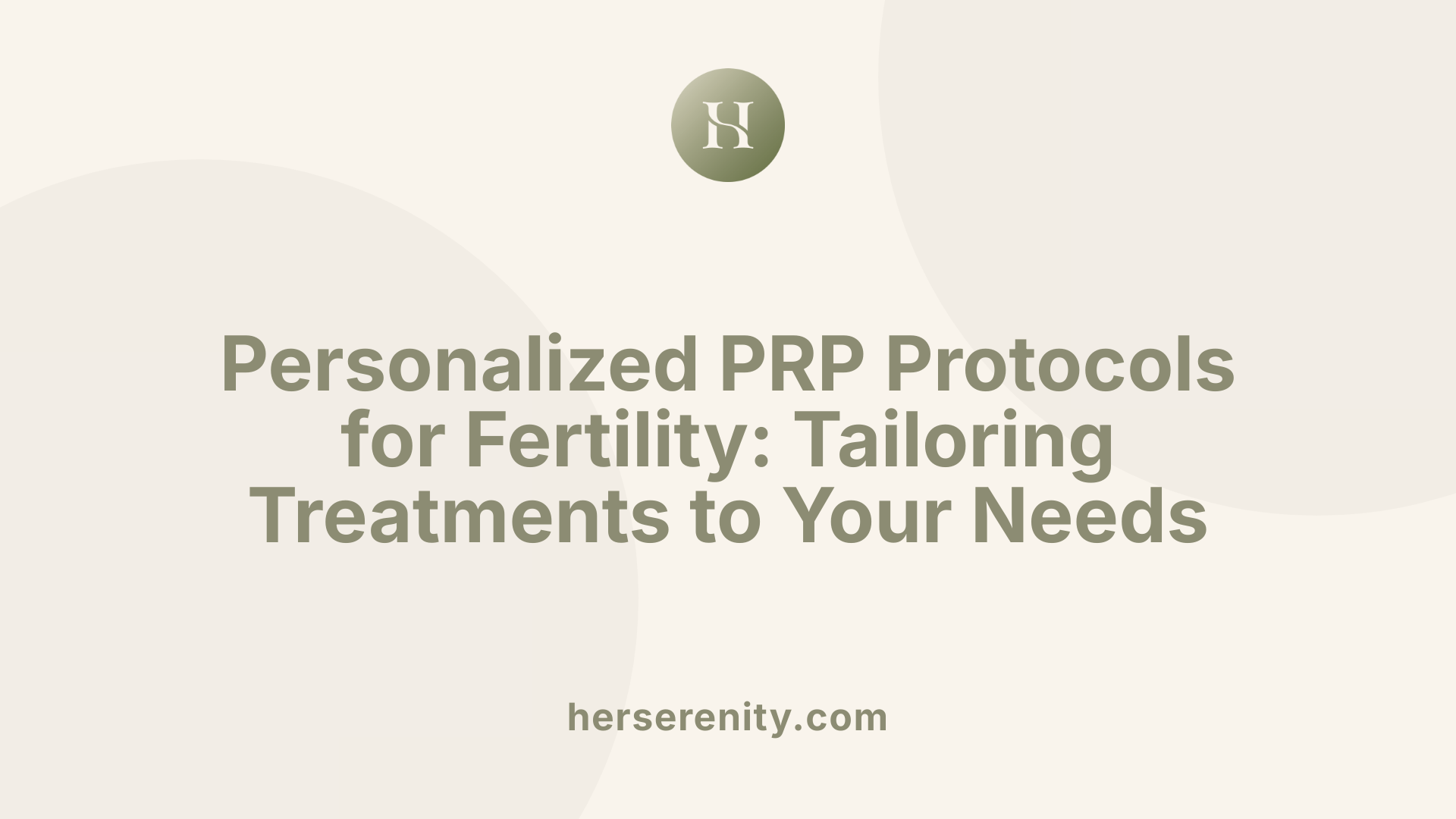
How do centrifugation and activation methods differ in PRP preparation?
PRP, or platelet-rich plasma, is prepared from a patient's own blood through centrifugation, which separates platelets from other blood components. However, the specifics of this process can vary widely between clinics. Different speed and duration settings during centrifugation influence the concentration of platelets and growth factors in the final PRP product.
Moreover, activation of PRP to release growth factors also differs. Common activation methods include the use of calcium chloride or thrombin, which induce platelet degranulation and the subsequent release of regenerative proteins. Variations in the activation process can affect the concentration and timing of biologically active factors delivered to ovarian or endometrial tissue.
What are variations in PRP injection techniques?
Injection protocols vary in terms of site, volume, and timing. Some clinics administer PRP directly into the ovarian stroma to stimulate follicular activity, while others may inject into the endometrium to enhance tissue regeneration for implantation.
The number of injections and intervals between treatments are not standardized. This variability can affect how efficiently the PRP’s regenerative factors influence local tissue repair and ovarian function.
How diverse are fertility clinics in applying PRP therapy?
Due to the lack of widely accepted guidelines, fertility centers tailor PRP protocols based on their clinical experience and patient needs. Differences include the blood volume drawn, centrifugation devices used, platelet concentration targets, activation agents, and delivery techniques.
This diversity reflects the experimental nature of PRP use in reproductive medicine but complicates the comparison of clinical outcomes across studies and facilities.
Why is there a need for standardized PRP protocols?
Standardized protocols are essential to reliably assess the efficacy and safety of PRP therapy in fertility treatments. Consistency in preparation and administration could improve reproducibility and enable meta-analyses, which are currently limited by heterogeneous methods.
Uniform protocols would also facilitate optimization, helping clinicians identify the most effective doses, activation methods, and injection strategies for enhancing ovarian function and pregnancy outcomes.
How does protocol variability impact clinical outcomes and reproducibility?
Variations in PRP preparation and delivery may partially explain the differing success rates reported in studies involving women with diminished ovarian reserve or poor ovarian response. Inconsistent platelet concentrations and activation states might influence the extent of folliculogenesis, angiogenesis, and tissue remodeling elicited by PRP.
This heterogeneity poses challenges for drawing definitive conclusions about PRP’s efficacy and for establishing it as a standard fertility treatment. It underscores the importance of further research toward protocol standardization to maximize therapeutic benefits and ensure safety.
| Aspect | Description | Impact on Fertility Care |
|---|---|---|
| Centrifugation Protocols | Varying speed and time to concentrate platelets | Affects growth factor concentration and regenerative potential |
| Activation Techniques | Use of calcium chloride or thrombin, or none | Influences timing and amount of growth factor release |
| Injection Methods | Site (ovarian or endometrial), volume, frequency | Determines local tissue response and clinical outcomes |
| Clinic Practices | Diverse protocols and patient customization | Leads to variability in treatment effectiveness and comparability |
| Need for Standardization | Lack of universal protocols | Limits reproducibility, clinical adoption, and development of best practices |
PRP Therapy in Addressing Ovarian Dysfunction Associated with Polycystic Ovary Syndrome (PCOS)
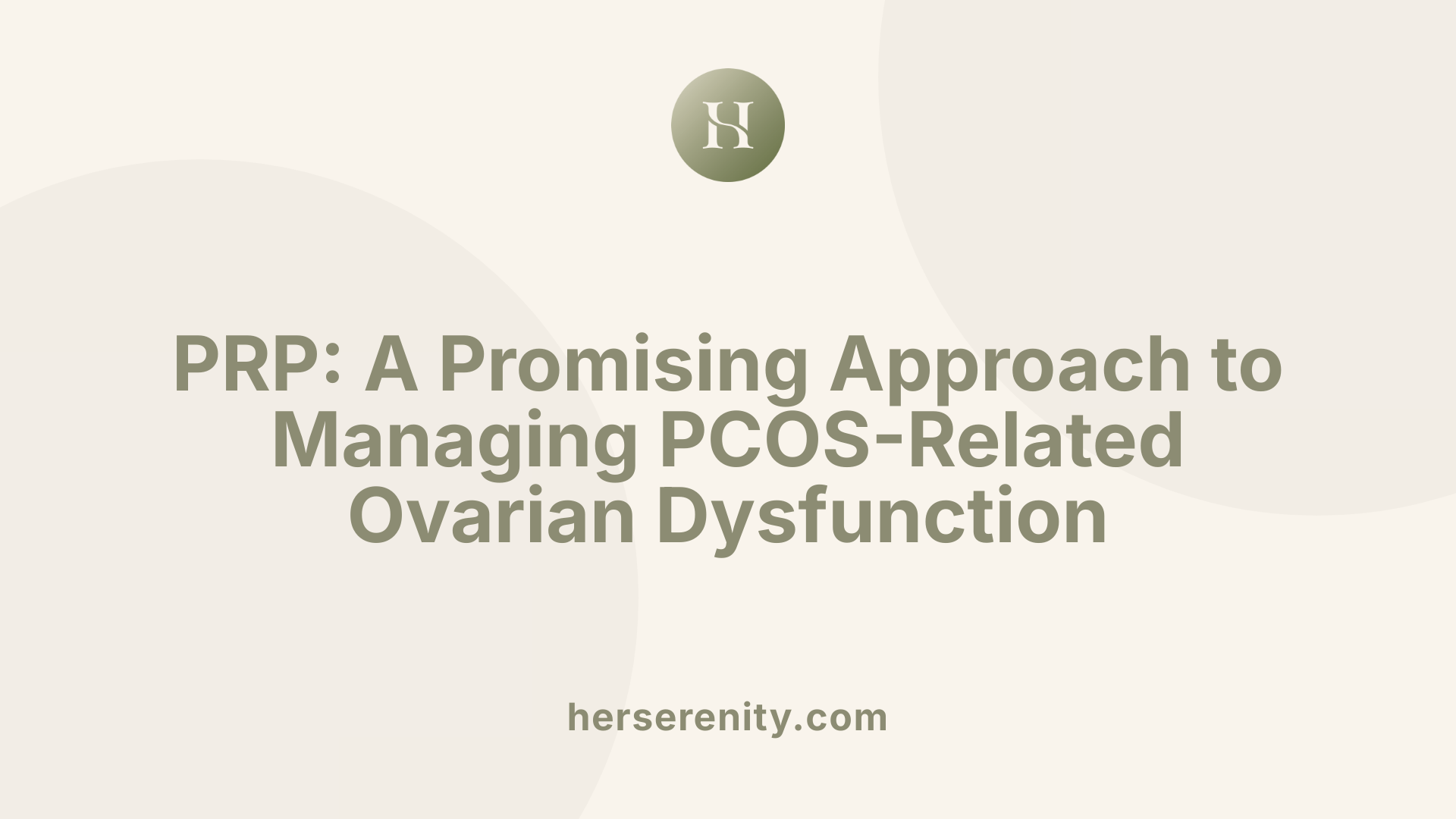
How Does PRP Improve Ovarian Antioxidant Potential in PCOS?
Polycystic Ovary Syndrome (PCOS) is often characterized by oxidative stress within ovarian tissue, which can impair follicle development and hormone balance. PRP therapy has been shown to enhance ovarian antioxidant potential by reducing oxidative stress and promoting mitochondrial function. This benefits the ovarian environment by protecting cells from damage and supporting healthier follicular growth.
In What Ways Does PRP Stimulate Folliculogenesis in PCOS?
The growth factors present in PRP, such as vascular endothelial growth factor (VEGF) and platelet-derived growth factor (PDGF), stimulate folliculogenesis by encouraging follicle development and vascularization. This effect helps restore normal follicular activity in women with PCOS, which typically exhibits arrested or impaired follicle maturation.
How Does PRP Alleviate Ovarian Dysfunction in PCOS?
PRP can mitigate ovarian dysfunction in PCOS through multiple mechanisms. These include:
- Activation of dormant follicles
- Improving blood supply via angiogenesis
- Reducing local inflammation
- Supporting tissue remodeling and regeneration
By addressing these factors, PRP helps normalize ovarian function, potentially correcting hormonal imbalances and improving ovulation.
Could PRP Serve as an Adjunct Therapy for PCOS-Related Infertility?
Due to its regenerative effects on ovarian tissue and enhancement of follicular development, PRP shows promise as an adjunct therapy for infertility linked to PCOS. Its ability to improve ovarian antioxidant defense and stimulate folliculogenesis suggests it could complement existing treatments, improving ovulatory function and fertility outcomes in affected women.
PRP Treatment's Contribution to Increased Number of Oocytes and Embryos in ART Cycles
Statistically Significant Increases in Retrieved Oocytes
PRP therapy has been shown to significantly increase the number of oocytes retrieved during assisted reproductive technology (ART) cycles. Studies report an average increase of approximately 0.81 oocytes post-PRP treatment, indicating enhanced ovarian responsiveness. This improvement likely results from PRP's ability to stimulate follicular development and folliculogenesis through the action of growth factors such as PDGF, VEGF, and IGF.
Enhancement in Embryo Creation
Alongside more oocytes, PRP treatment also boosts embryo generation. Data indicates an average rise of about 0.91 embryos following PRP administration. This increase can be attributed to improved oocyte quality and enhanced follicular environment, fostering better fertilization and early embryo development.
Impact on Fertilization Success Rates
By promoting ovarian tissue regeneration and improving oocyte competence, PRP potentially increases fertilization success during ART. The growth factors and cytokines in PRP activate signaling pathways that aid cell survival and reduce oxidative stress, contributing to higher quality eggs and embryos.
Potential Improvement in Live Birth Outcomes
Though preliminary, clinical reports suggest that PRP therapy may lead to better live birth rates. Studies show a spontaneous pregnancy rate near 7%, biochemical pregnancy rate around 18%, and live birth rate approximately 11% post-treatment. These outcomes hint at PRP's role in enhancing overall reproductive potential in women undergoing ART.
Together, these findings illustrate PRP's promising role in improving key fertility parameters related to oocyte retrieval, embryo formation, and pregnancy outcomes within ART protocols.
Emerging Research and the Future of PRP in Female Fertility Treatments

What Promising Preliminary Data Supports PRP Use?
Early clinical studies have shown that intraovarian PRP injections improve ovarian reserve markers such as Anti-Müllerian Hormone (AMH) and Antral Follicle Count (AFC), while reducing Follicle-stimulating Hormone (FSH) levels. These changes suggest enhanced ovarian function and follicular activity. Improved menstrual cycle regularity, spontaneous pregnancies, increased oocyte retrieval, and higher embryo numbers have also been reported in women with diminished ovarian reserve, premature ovarian insufficiency (POI), or poor ovarian response. Importantly, no significant adverse effects have been documented, reinforcing PRP’s safety in initial applications.
Why Are Larger Randomized Controlled Trials Needed?
Despite encouraging results, current evidence primarily consists of small studies and case reports. Larger, well-designed randomized controlled trials are essential to confirm PRP’s efficacy, establish standardized treatment protocols, and ensure reproducibility across diverse patient populations. These trials would clarify long-term safety, optimal dosing, timing of administration, and identification of patient groups who will benefit most.
How Could PRP Integrate With Advanced Assisted Reproductive Technologies (ART)?
The potential synergy between PRP and ART protocols is an exciting frontier. PRP therapy may enhance ovarian response to stimulation, improve oocyte quality, and augment endometrial receptivity, thereby increasing implantation and live birth rates. Future integration could involve concurrent PRP application with in vitro fertilization (IVF) cycles or embryo transfers, tailoring personalized fertility treatments.
What Are the Challenges in Clinical Adoption of PRP?
Variability in PRP preparation methods and administration protocols across clinics poses a significant hurdle. Differences in platelet concentration, activation techniques, and injection timing affect treatment consistency. Additionally, regulatory frameworks and cost considerations may influence widespread adoption. Education of clinicians and patients is crucial for informed decision-making.
What Potential Expansion of Indications Could PRP Have?
Beyond treating diminished ovarian reserve and POI, research indicates PRP’s promise in managing ovulatory dysfunction, thin endometrium, recurrent implantation failure, and even recovery from chemotherapy-induced ovarian damage. Its tissue regenerative properties might extend benefits to a broader spectrum of female reproductive disorders, potentially transforming fertility care.
As research progresses, understanding and harnessing PRP’s regenerative mechanisms may lead to novel, personalized fertility treatments with improved outcomes for women facing reproductive challenges.
Role of PRP in Supporting Reproductive Health Beyond Fertility Enhancement
How do reproductive health services support individuals and couples beyond conception treatments?
Reproductive health services extend well beyond helping with conception. They provide comprehensive support including education on sexual health, contraception, family planning, and prevention of sexually transmitted infections. These services empower individuals and couples to make informed decisions while also addressing emotional and psychological aspects related to reproductive health.
Endometrial Tissue Repair and PRP
Platelet-rich plasma (PRP) has shown promising benefits in repairing and regenerating endometrial tissue. Injections of PRP can promote endometrial hypertrophy and healing, which is crucial for preparing the uterine lining to support embryo implantation. For women with conditions like intrauterine adhesions (Asherman syndrome), PRP therapy increases endometrial thickness and helps restore a receptive environment for pregnancy.
Support During Implantation and Reproductive Tissue Regeneration
PRP infusion within the uterus can enhance endometrial receptivity, thereby improving the success rates of embryo implantation. Its growth factors stimulate tissue regeneration, angiogenesis, and cell proliferation, which aid in creating an optimal environment for embryo survival and development. Moreover, PRP supports ovarian tissue repair and follicular development, further contributing to reproductive tissue regeneration.
Potential Benefits in Recurrent Implantation Failure
Women experiencing recurrent implantation failure (RIF) may benefit from intrauterine PRP therapy. PRP's ability to improve endometrial thickness and vascularization helps overcome challenges related to poor implantation. These therapeutic effects can increase clinical pregnancy rates and overall reproductive outcomes in women facing implantation difficulties.
Overall Reproductive Wellbeing
Beyond fertility enhancement, PRP therapy plays a significant role in promoting reproductive wellness by improving tissue repair and reducing inflammation. It contributes to better hormonal balance and ovarian function, which is essential for sustaining menstrual cycles and overall reproductive health. This comprehensive regenerative approach supports long-term reproductive wellbeing and may enhance quality of life for individuals and couples managing reproductive challenges.
Measurable Clinical Improvements in Spontaneous Pregnancy Rates after PRP Treatment
Incidence of Spontaneous Pregnancies
Clinical data reveals that spontaneous pregnancy rates following PRP treatment in women with diminished ovarian reserve or related conditions hover around 7%. This suggests a notable potential for natural conception stimulated by the biological effects of intraovarian PRP therapy.
Biochemical and Live Birth Rates
Beyond spontaneous pregnancies, biochemical pregnancy rates—indicative of early pregnancy presence—reach approximately 18% after PRP treatment. Furthermore, live birth rates are reported at around 11%, reflecting successful pregnancy culmination following the therapy.
Comparison with Baseline Fertility Levels
These figures represent a remarkable improvement when compared to baseline fertility levels in women suffering from premature ovarian insufficiency (POI), poor ovarian response, or age-related ovarian decline. Before PRP intervention, spontaneous pregnancies and live births are typically lower or absent in this population.
Implications for Natural Conception Potential
The enhanced pregnancy outcomes post-PRP treatment imply a positive restoration of ovarian function that boosts natural fertility. This offers hope for women seeking natural conception without relying solely on assisted reproductive technologies. Importantly, PRP’s ability to improve ovarian reserve markers such as Anti-Müllerian Hormone (AMH) and reduce Follicle-stimulating Hormone (FSH) may underlie these clinical successes, supporting an improved ovarian environment conducive to pregnancy.
Comparison of PRP Therapy with Traditional Fertility Treatments
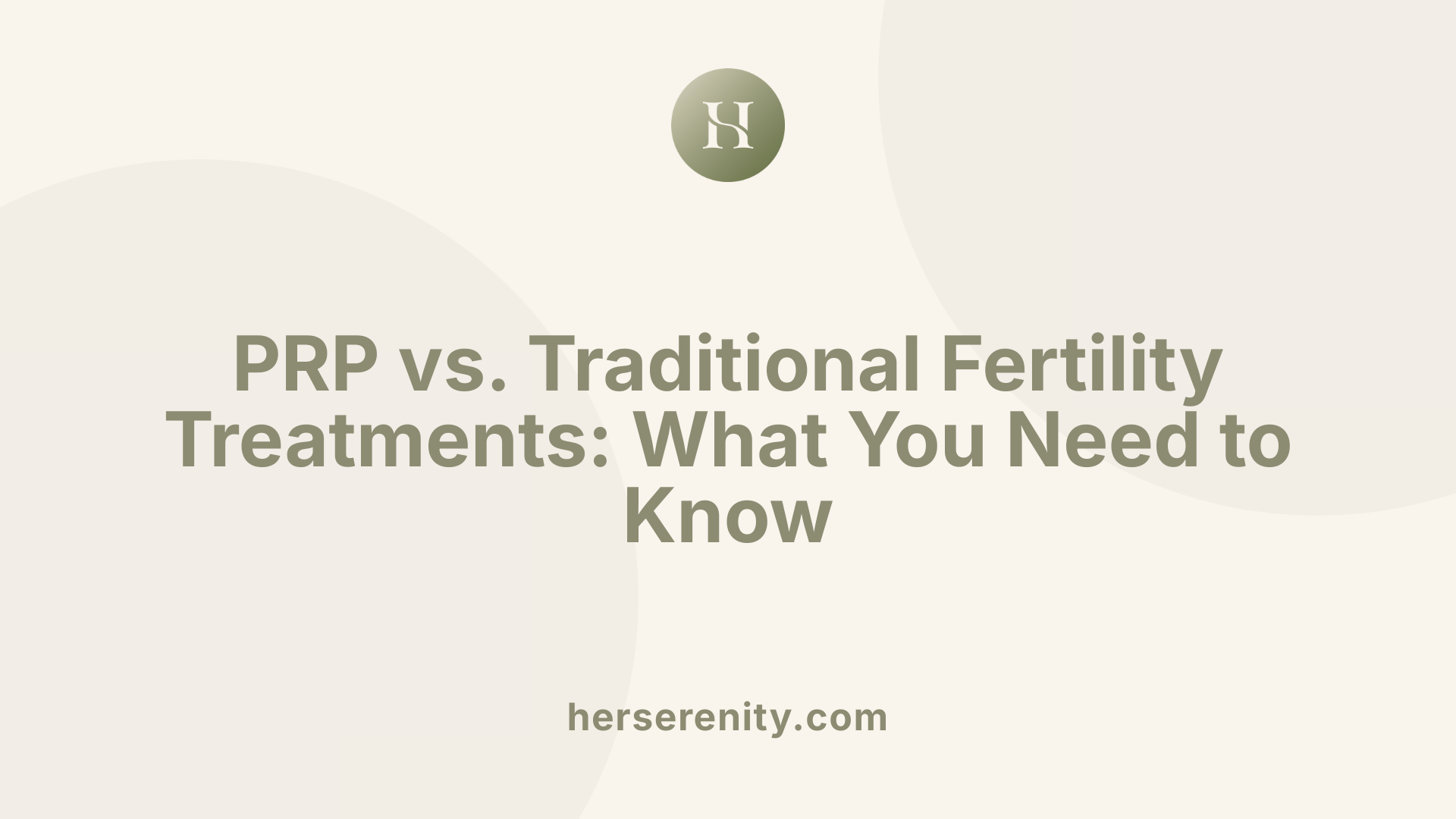
How Does PRP Therapy Complement Traditional Fertility Treatments?
PRP therapy is increasingly viewed as a complementary treatment alongside conventional medications and assisted reproductive technologies (ART). Unlike hormone therapies that primarily regulate endocrine function, PRP directly targets ovarian tissue regeneration by delivering concentrated growth factors such as PDGF, VEGF, and TGF-β. This approach supports folliculogenesis and angiogenesis, thereby potentially enhancing ovarian reserve and improving the ovarian environment for ART procedures.
What Advantages Does PRP Offer Over Conventional Treatments?
PRP’s primary advantage lies in its autologous nature and its ability to stimulate tissue repair and regeneration. It promotes activation of dormant primordial follicles, supports vascularization, reduces inflammation, and encourages mitochondrial health — mechanisms not typically addressed by hormonal therapies alone. This regenerative effect may restore ovarian function in cases of premature ovarian insufficiency (POI), diminished ovarian reserve (DOR), or ovarian damage caused by chemotherapy.
How Effective Is PRP in Restoring Ovarian Function Compared to Traditional Methods?
Preliminary clinical studies indicate that PRP can increase ovarian reserve markers such as Anti-Müllerian Hormone (AMH) and Antral Follicle Count (AFC), decrease Follicle-stimulating Hormone (FSH) levels, and improve spontaneous pregnancies and menstrual cycle restoration. These outcomes offer promising alternatives or adjuncts to conventional treatments, particularly for women with poor ovarian response where standard therapies often have limited success.
What Are the Limitations and Research Gaps for PRP Therapy?
Despite encouraging results, PRP treatment protocols lack standardization across clinics, and long-term safety data remain insufficient. Most evidence comes from small-scale studies, case reports, or animal models. Large randomized controlled trials are needed to validate efficacy, optimize preparation and administration techniques, and fully understand patient selection criteria.
Which Patients Might Benefit Most from PRP Therapy?
Women with diminished ovarian reserve, premature ovarian insufficiency, poor response to stimulation, or ovarian damage from chemotherapy could be suitable candidates for PRP therapy. It is especially considered when traditional fertility treatments have failed or when enhancing ovarian microenvironment may improve ART outcomes.
| Aspect | PRP Therapy | Traditional Fertility Treatments (e.g., Hormones, ART) | Notes |
|---|---|---|---|
| Primary Mechanism | Tissue regeneration & angiogenesis | Hormonal modulation & gamete manipulation | PRP offers biological repair, whereas traditional focus is on stimulation and retrieval |
| Application | Intraovarian or intrauterine injection | Hormonal therapy, IVF, ICSI | PRP is minimally invasive yet experimental |
| Suitability | DOR, POI, chemotherapy-induced damage | Broad infertility causes | PRP may benefit subgroups with ovarian tissue compromise |
| Safety Profile | Minimal adverse events reported | Varies with treatment type | PRP safety needs further long-term assessment |
| Evidence Base | Emerging, small studies and animal models | Established, large clinical trials | More research needed to confirm PRP efficacy |
Patient Experience and Considerations in PRP Fertility Therapy
How tolerable is the PRP procedure for patients?
The PRP fertility treatment involves drawing blood, processing it to concentrate platelets, and injecting this platelet-rich plasma into the ovaries or uterus. Patients generally report the procedure as minimally invasive and well-tolerated. Discomfort is usually limited to localized sensations such as mild pain or tenderness at the injection site, with no significant adverse events reported in clinical studies.
What does post-treatment recovery look like?
After PRP therapy, patients typically experience a brief recovery period with minimal downtime. Since the procedure is relatively non-invasive, normal activities can usually be resumed quickly. Any localized discomfort tends to resolve within a few days. Follow-up monitoring includes hormone level assessments and ultrasound to track ovarian response, typically over several months.
What are the emotional and psychological impacts?
Fertility treatments, including PRP therapy, can evoke a range of emotions. Patients often feel hopeful after PRP due to its potential to restore ovarian function and improve fertility outcomes. However, uncertainty regarding treatment efficacy and waiting periods for results may cause anxiety. Counseling and psychological support are valuable to help patients manage expectations and emotional well-being.
Who is an appropriate candidate for PRP fertility therapy?
PRP therapy shows promise particularly for women with diminished ovarian reserve, premature ovarian insufficiency, poor ovarian response, or age-related ovarian decline. Selection criteria generally include patients with measurable ovarian function decline who can benefit from regenerative treatment. Thorough clinical evaluation ensures appropriate use and maximizes chances of success.
What financial considerations affect patients?
As an emerging treatment, PRP fertility therapy may not be universally covered by insurance and can incur out-of-pocket costs. Prices vary depending on clinic protocols and geographic location. Patients should consider treatment affordability alongside potential benefits and consult with healthcare providers about financing options and cost-effectiveness within their fertility plan.
Molecular Pathways Activated by PRP in Ovarian Tissue Regeneration
How does PRP activate the PI3K/AKT/mTOR signaling pathway?
PRP contains bioactive growth factors that stimulate the PI3K/AKT/mTOR intracellular signaling cascade. This pathway is crucial for promoting cell survival and proliferation in ovarian tissue. Activation begins when growth factors such as PDGF and IGF bind to their respective receptors, triggering PI3K activation that leads to phosphorylation and activation of AKT. This, in turn, stimulates mTOR, a central regulator of cellular metabolism, growth, and division.
What role does PRP play in cellular proliferation and survival in the ovary?
The growth factors within PRP, like TGF-β and EGF, promote granulosa cell proliferation and prevent apoptosis by enhancing survival signals through pathways including PI3K/AKT/mTOR. These effects encourage regeneration of ovarian tissue and support follicle survival.
How does PRP contribute to follicular activation mechanisms?
PRP may activate dormant primordial follicles by signaling through intracellular pathways such as PI3K/AKT/mTOR. The triggers from growth factors help to awaken these follicles and initiate folliculogenesis, thus improving ovarian reserve function.
In what ways does PRP stimulate angiogenic pathways in ovarian tissue?
Angiogenesis is critical for follicle development and hormone secretion. PRP growth factors like VEGF enhance neovascularization within ovarian tissue, restoring blood supply. This increased vascularization improves oxygen and nutrient delivery, which supports both follicular growth and endocrine function.
These molecular actions together enhance ovarian tissue regeneration, improve hormonal balance, and potentially reverse aspects of ovarian insufficiency.
The Potential of PRP in Transforming Female Fertility Care
PRP therapy represents a cutting-edge approach to enhancing female fertility by harnessing the body's own regenerative capacities. Through its rich concentration of growth factors, PRP contributes to the rejuvenation of ovarian tissue, restoration of hormonal balance, improved follicular development, and better pregnancy outcomes. While current clinical evidence and preliminary trials highlight its promise for women with diminished ovarian reserve, POI, and other fertility challenges, further research is crucial to establish standardized protocols and long-term safety. As part of an integrated fertility treatment strategy, PRP holds transformative potential to empower women on their reproductive journeys, offering new hope for conception and reproductive health.
References
- Platelet-Rich Plasma (PRP) in Reproductive Medicine
- Therapeutic roles of platelet-rich plasma to restore female ...
- Platelet-rich plasma (PRP) treatment of the ovaries ...
- The Impact of Platelet-Rich Plasma (PRP) on Ovarian ...
- Platelet-Rich Plasma (PRP): Transforming IVF for Better
- Fertility Treatments For Infertility
- Infertility: Types, Causes, Symptoms, Diagnosis & Treatment
- Pros and Cons - In Vitro Fertilization(IVF)






